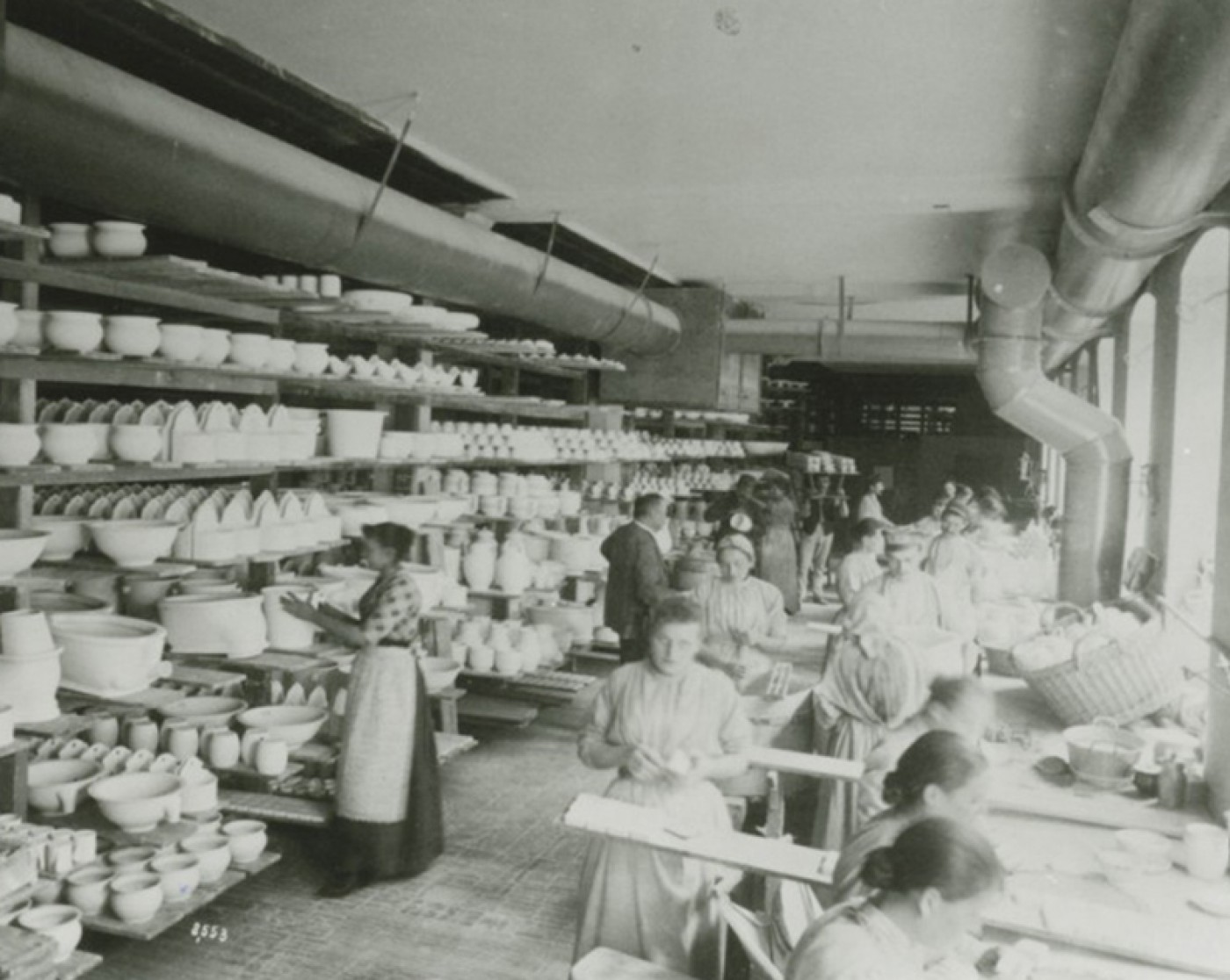
History
The company's history
Learn more about the beginnings of the company and go on a journey through the most important events in the history of Villeroy & Boch AG.
-
1700
A WORLD COMPANY EMERGES
-
1748
The birth of the company
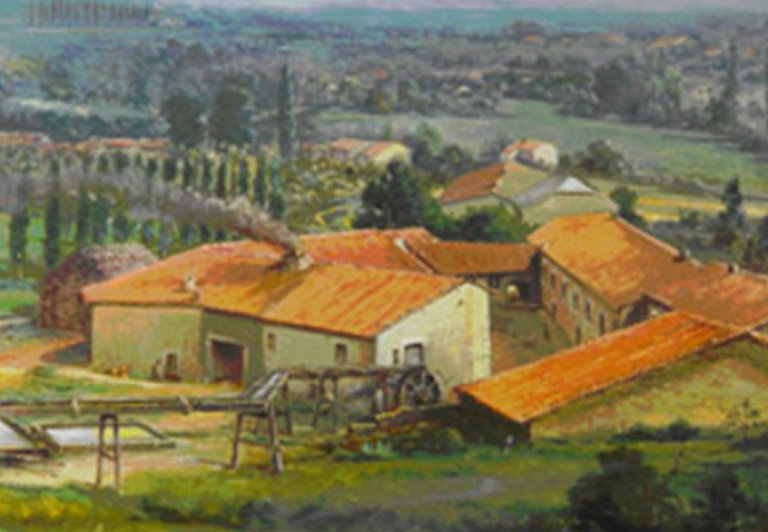 Francois Boch bears the title "Bombardier du Roi", royal cannon founder. The iron founder from village of Audun-le-Tiche in Lorraine, however, decides to start a new career. In 1748, together with his three sons, he begins manufacturing ceramic crockery. This marks the birth of the Villeroy & Boch company.
Francois Boch bears the title "Bombardier du Roi", royal cannon founder. The iron founder from village of Audun-le-Tiche in Lorraine, however, decides to start a new career. In 1748, together with his three sons, he begins manufacturing ceramic crockery. This marks the birth of the Villeroy & Boch company. -
1766
Luxembourg
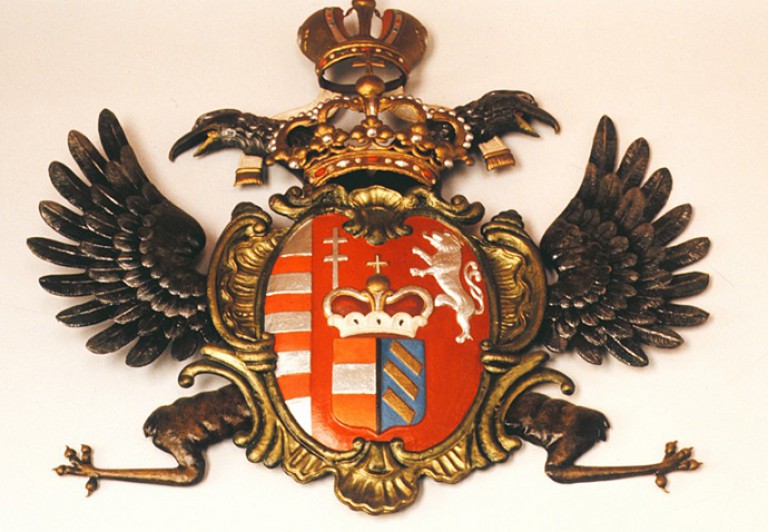 Luxembourg is one of the Bochs' initial sales markets. Due to this fact Francois' son, Pierre-Joseph, submits a request to the Austrian government for permission to set up a manufactory in the Province of Luxembourg. Of the numerous persons who apply, he receives authorisation from Empress Maria Theresia. The new factory at Septfontaines/Luxembourg is also a major step from manufactory operations to early industrial serial production. As a sign of special recognition, the Faiencerie is permitted to call itself Manufacture Impériale et Royale.
Luxembourg is one of the Bochs' initial sales markets. Due to this fact Francois' son, Pierre-Joseph, submits a request to the Austrian government for permission to set up a manufactory in the Province of Luxembourg. Of the numerous persons who apply, he receives authorisation from Empress Maria Theresia. The new factory at Septfontaines/Luxembourg is also a major step from manufactory operations to early industrial serial production. As a sign of special recognition, the Faiencerie is permitted to call itself Manufacture Impériale et Royale. -
1770
Alt Luxemburg
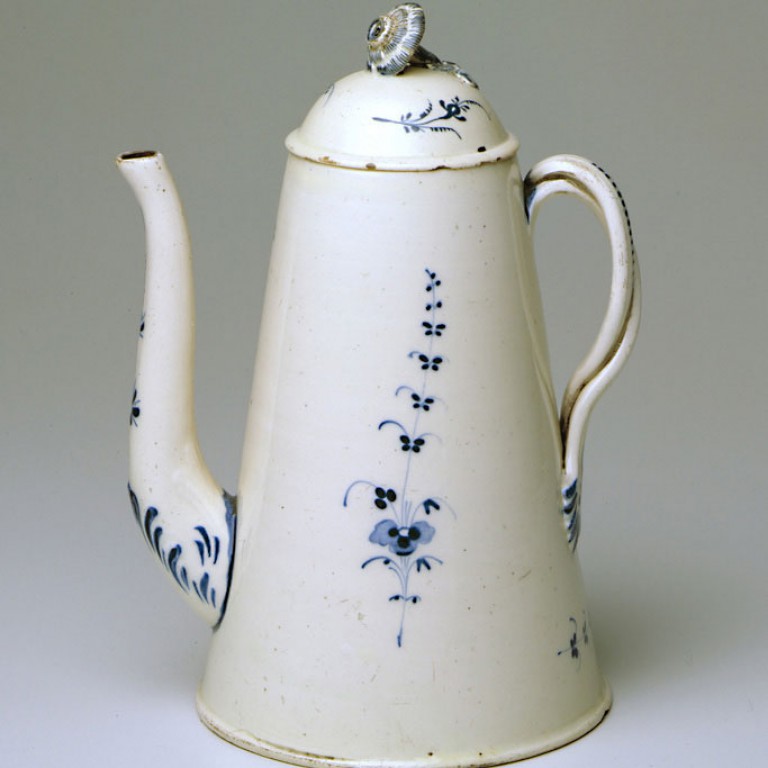 Popular around the world, the Alt Luxemburg crockery series is a Villeroy & Boch evergreen. It dates back to the Brindille pattern which was introduced by Pierre-Joseph in 1770. The creatively gifted entrepreneur fashioned a series of artistic ceramic items including a rocaille hanging flowerpot and a crucifix base with snake symbol – both exhibits can to be found in the Mettlach Ceramics Museum.
Popular around the world, the Alt Luxemburg crockery series is a Villeroy & Boch evergreen. It dates back to the Brindille pattern which was introduced by Pierre-Joseph in 1770. The creatively gifted entrepreneur fashioned a series of artistic ceramic items including a rocaille hanging flowerpot and a crucifix base with snake symbol – both exhibits can to be found in the Mettlach Ceramics Museum. -
1791
Ceramics manufacturers Villeroy
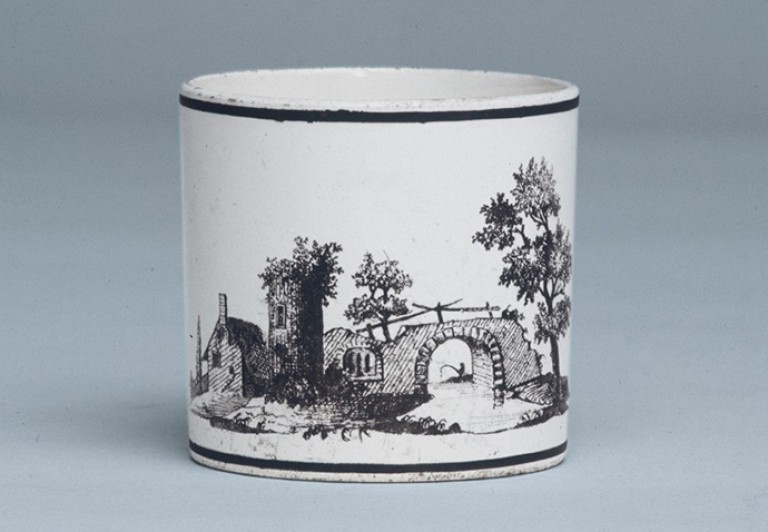 Together with two partners, the businessman Nicolas Villeroy acquires an earthenware factory in Vaudrevange, which is today called Wallerfangen. In 1797 he becomes its sole owner. Villeroy is one of the first ceramics manufacturers to use coal as fuel. He calls in specialists from England and France to modernise production. Above all, he experiments with pattern printing. From 1815 he applies the copper printing process which enables products to be offered more cheaply.
Together with two partners, the businessman Nicolas Villeroy acquires an earthenware factory in Vaudrevange, which is today called Wallerfangen. In 1797 he becomes its sole owner. Villeroy is one of the first ceramics manufacturers to use coal as fuel. He calls in specialists from England and France to modernise production. Above all, he experiments with pattern printing. From 1815 he applies the copper printing process which enables products to be offered more cheaply. -
1800
FROM METTLACH TO THE WHOLE WORLD
-
1809
Acquisition of the Old Abbey in Mettlach
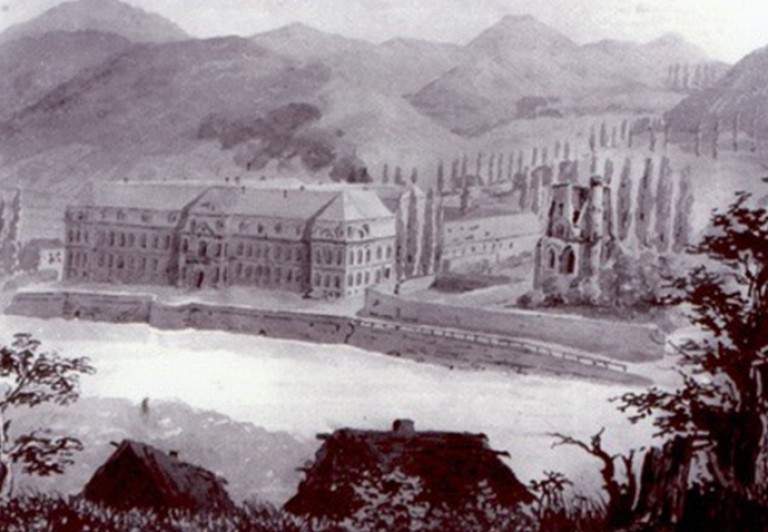 Jean-François Boch buys the former Benedictine abbey in Mettlach on the River Saar. In the baroque building he sets up a highly-modern, extensively mechanised system of tableware production. He designs many of the production machines himself. His inventions smooth the way for manual ceramic manufacture to be replaced by industrial production. Today, the baroque building is the corporate headquarters of Villeroy & Boch.
Jean-François Boch buys the former Benedictine abbey in Mettlach on the River Saar. In the baroque building he sets up a highly-modern, extensively mechanised system of tableware production. He designs many of the production machines himself. His inventions smooth the way for manual ceramic manufacture to be replaced by industrial production. Today, the baroque building is the corporate headquarters of Villeroy & Boch. -
1812
Social commitment
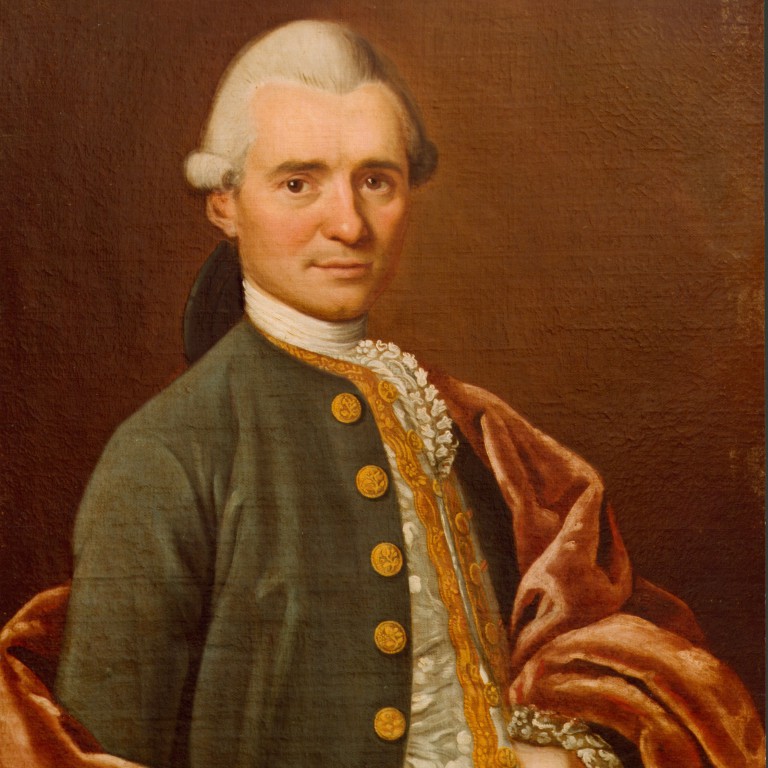 As an entrepreneur Pierre-Joseph is one of the social pioneers of the early 19th century. He founds the social institution Antonius Guild in Septfontaines. Its fundamental elements are insurance to cover illness, accidents, and disability, and also a pension fund. It is a comprehensive social insurance to which both employees and the company pay contributions. Antonius Guild benefits are considerably more extensive than those which later became law. They serve as a model for Bismarck 70 years later when he develops the first German social insurance scheme. In 1857, Nicolas Villeroy's daughter Leonie and her husband Adolphe de Galhau set up the Sophie Trust to support families in need.
As an entrepreneur Pierre-Joseph is one of the social pioneers of the early 19th century. He founds the social institution Antonius Guild in Septfontaines. Its fundamental elements are insurance to cover illness, accidents, and disability, and also a pension fund. It is a comprehensive social insurance to which both employees and the company pay contributions. Antonius Guild benefits are considerably more extensive than those which later became law. They serve as a model for Bismarck 70 years later when he develops the first German social insurance scheme. In 1857, Nicolas Villeroy's daughter Leonie and her husband Adolphe de Galhau set up the Sophie Trust to support families in need. -
1829
Production of earthenware
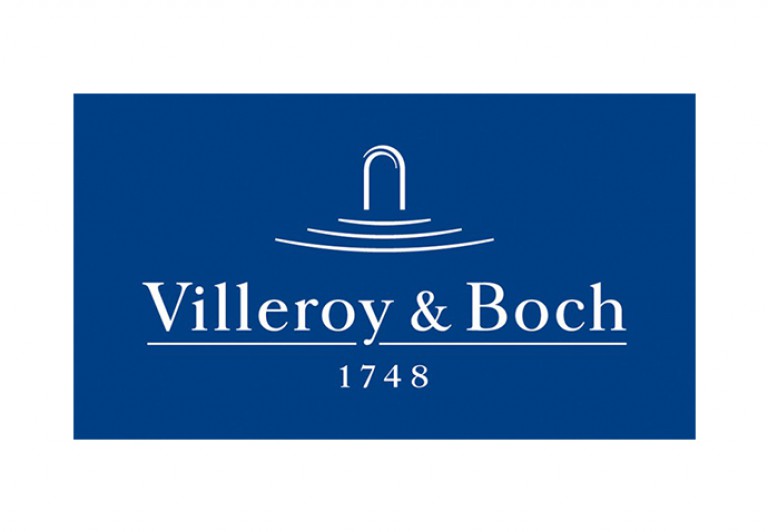 While the second Boch generation achieved an optimised product quality by experimenting with materials, the third generation made a decisive leap with Jean-Francois Boch. Trained at the École de Sciences in Paris, the entrepreneur successfully develops a type of earthenware which is bright white and extremely hard. It looks deceptively like porcelain, but could be supplied considerably cheaper. This path democratised tableware. As a result of this early innovation, porcelain – the previously rare and costly, precious treasure reserved solely for the nobility – if now affordable for broad classes of society. The products are not only well-accepted on the market, but also officially. At the first Prussian trade exhibition in Berlin in 1822, the Bochs receive the gold medal, which is followed by many national and international awards.
While the second Boch generation achieved an optimised product quality by experimenting with materials, the third generation made a decisive leap with Jean-Francois Boch. Trained at the École de Sciences in Paris, the entrepreneur successfully develops a type of earthenware which is bright white and extremely hard. It looks deceptively like porcelain, but could be supplied considerably cheaper. This path democratised tableware. As a result of this early innovation, porcelain – the previously rare and costly, precious treasure reserved solely for the nobility – if now affordable for broad classes of society. The products are not only well-accepted on the market, but also officially. At the first Prussian trade exhibition in Berlin in 1822, the Bochs receive the gold medal, which is followed by many national and international awards. -
1836
Merger between Boch and Villeroy
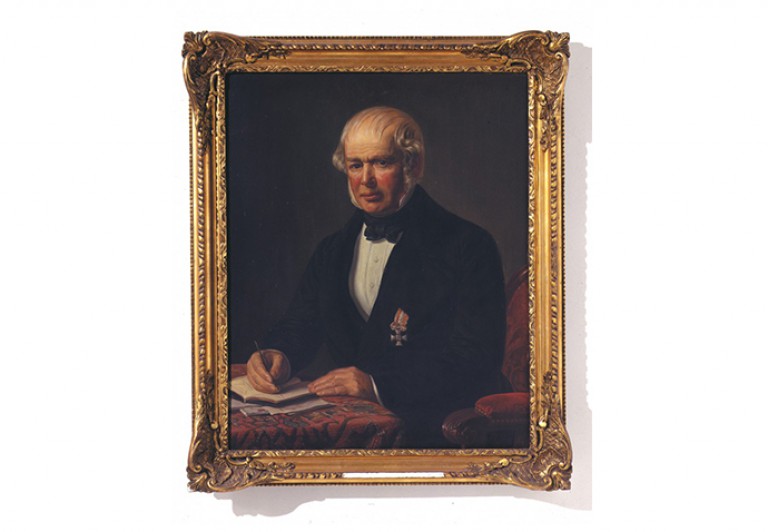 The factories of the entrepreneurs Boch and Villeroy are not far away from each other. Now and again the two competitors, who successfully market their products beyond Germany's borders, even meet. But in order to exist in Europe's economic framework, particularly alongside the dominant English industry, the two agree to merge. Villeroy & Boch is born. It combines the strengths of both sides: creative talent, entrepreneurial spirit, innovative power and production capacity, and is one of the 19th century's first global players.
The factories of the entrepreneurs Boch and Villeroy are not far away from each other. Now and again the two competitors, who successfully market their products beyond Germany's borders, even meet. But in order to exist in Europe's economic framework, particularly alongside the dominant English industry, the two agree to merge. Villeroy & Boch is born. It combines the strengths of both sides: creative talent, entrepreneurial spirit, innovative power and production capacity, and is one of the 19th century's first global players. -
1843
Complete offer as corporate strategy
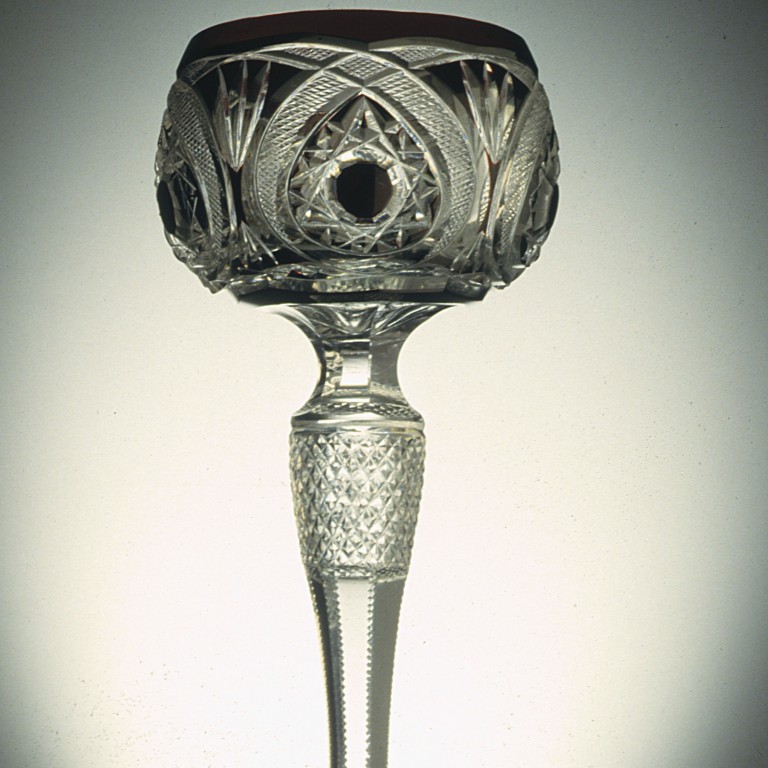 The full-range concept – today an integral element of the corporate strategy – can be traced well back into the 19th century. In 1843 Villeroy and Boch set up the Cristallerie in Wadgassen. An attractive product range extension: by producing glasses the company was able to round off its crockery range, thus improving its market opportunities both in Germany and abroad. Every German town received regular supplies. From 1847 larger consignments were sent to Paris, Warsaw and London. A new connection to the Mannheim railway junction facilitated export to Moscow and St. Petersburg. Distribution was also extended to Scandinavia, Italy, Spain, Greece, Switzerland and Turkey. From around 1850 the first consignments were sent across the Atlantic to North and South America.
The full-range concept – today an integral element of the corporate strategy – can be traced well back into the 19th century. In 1843 Villeroy and Boch set up the Cristallerie in Wadgassen. An attractive product range extension: by producing glasses the company was able to round off its crockery range, thus improving its market opportunities both in Germany and abroad. Every German town received regular supplies. From 1847 larger consignments were sent to Paris, Warsaw and London. A new connection to the Mannheim railway junction facilitated export to Moscow and St. Petersburg. Distribution was also extended to Scandinavia, Italy, Spain, Greece, Switzerland and Turkey. From around 1850 the first consignments were sent across the Atlantic to North and South America. -
1851
World Exhibition
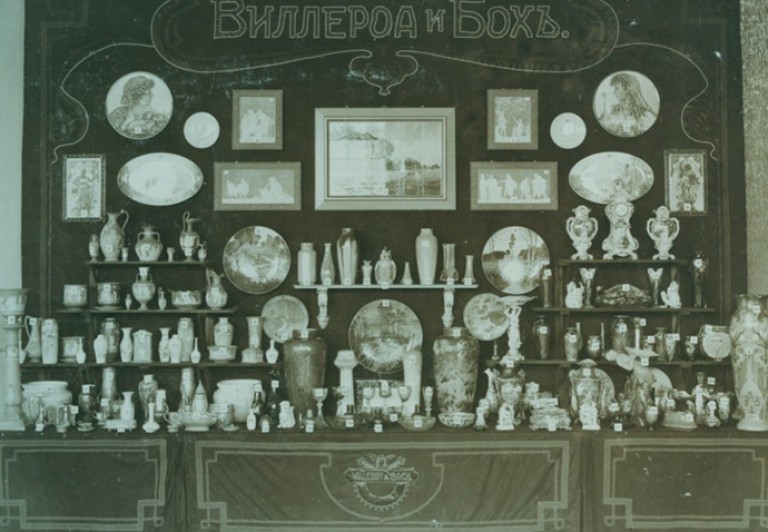 The Prussian Minister for Economic Affairs chooses Villeroy & Boch to take part in the famous World Exhibition in London. On a magnificently presented stand the company displays innovative everyday crockery and decorative ceramic items made of bone china and elaborately decorated stoneware. London was the start of a series of prestigious appearances at the great World Exhibitions of the 19th and early 20th century, including Philadelphia in 1876, Paris in 1878 and 1900, Chicago in 1893, St. Petersburg in 1901 and St. Louis in 1904.
The Prussian Minister for Economic Affairs chooses Villeroy & Boch to take part in the famous World Exhibition in London. On a magnificently presented stand the company displays innovative everyday crockery and decorative ceramic items made of bone china and elaborately decorated stoneware. London was the start of a series of prestigious appearances at the great World Exhibitions of the 19th and early 20th century, including Philadelphia in 1876, Paris in 1878 and 1900, Chicago in 1893, St. Petersburg in 1901 and St. Louis in 1904. -
1852
Mettlacher Platten
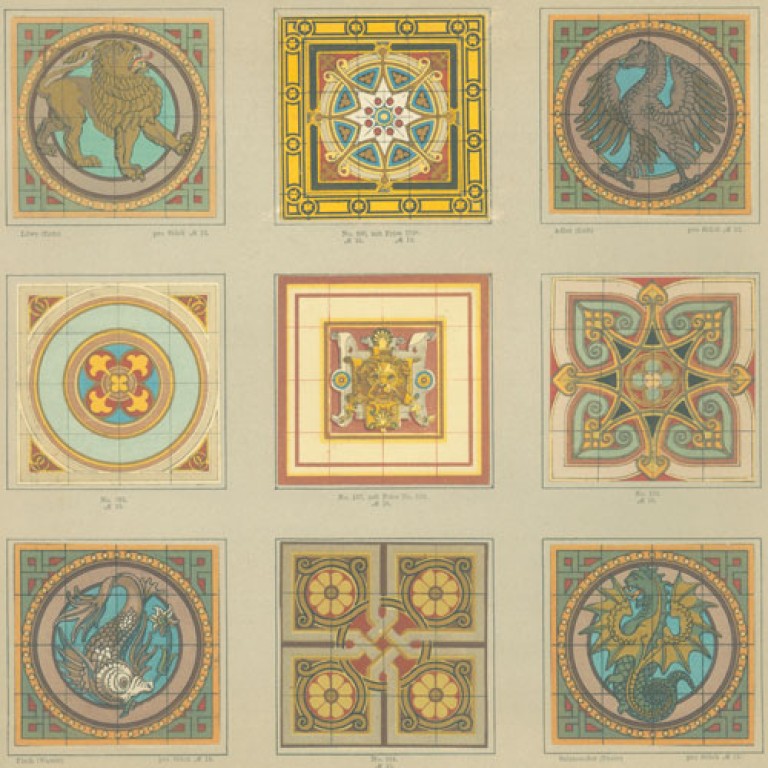 Many a good idea for the present can be won from the wealth held by history. When archaeologists came across a Roman floor mosaic in the vicinity of Mettlach, Eugen von Boch was entrusted with its restoration. Inspired by this archaeological find, he and his technicians begin experimenting with material for tile manufacture. They develop a production process which combines tremendous wear resistance with a sensationally beautiful appearance. Manufactured in Mettlach since 1852, these tiles achieve great success throughout the world under the name of Mettlacher Platten. Demand is so great that a factory specialising in tile manufacture is built in 1869 – the Mosaic Factory. In 1879 Villeroy & Boch takes over a further factory in Merzig which develops into the largest manufacturer of floor tiles anywhere in the world.
Many a good idea for the present can be won from the wealth held by history. When archaeologists came across a Roman floor mosaic in the vicinity of Mettlach, Eugen von Boch was entrusted with its restoration. Inspired by this archaeological find, he and his technicians begin experimenting with material for tile manufacture. They develop a production process which combines tremendous wear resistance with a sensationally beautiful appearance. Manufactured in Mettlach since 1852, these tiles achieve great success throughout the world under the name of Mettlacher Platten. Demand is so great that a factory specialising in tile manufacture is built in 1869 – the Mosaic Factory. In 1879 Villeroy & Boch takes over a further factory in Merzig which develops into the largest manufacturer of floor tiles anywhere in the world. -
1856
Export markets are opened
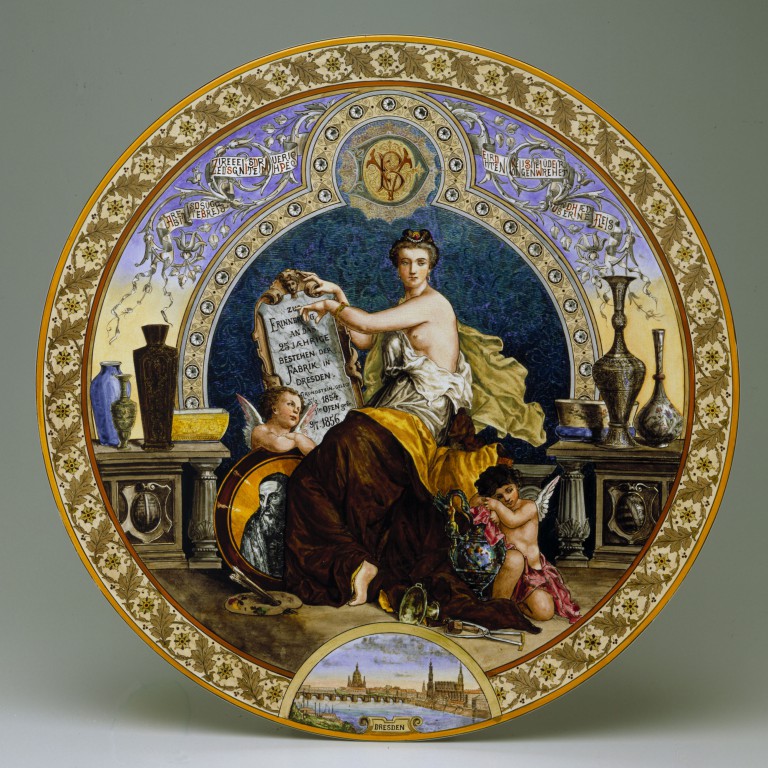 Eugen von Boch (4th Boch generation) recognised exactly where the markets of the future were located. He sets up the earthenware factory in Dresden so as to be able to open up new export markets in the north and east of Europe more easily and supply them better from here. Production is originally geared to crockery, but is extended only a short time later to include tiled stoves. The greatest contribution to the Dresden factory's reputation is made by the special department for shop interiors, after production of tiles had also been assumed here. The most famous example is the Dresdner Milchladen (Dresden Dairy), which is today one of the city's greatest tourist attractions. With its hand-worked and hand-painted tiles, the café at the Mettlach Ceramics Museum is an almost authentic version of this historic dairy. (see 2007)
Eugen von Boch (4th Boch generation) recognised exactly where the markets of the future were located. He sets up the earthenware factory in Dresden so as to be able to open up new export markets in the north and east of Europe more easily and supply them better from here. Production is originally geared to crockery, but is extended only a short time later to include tiled stoves. The greatest contribution to the Dresden factory's reputation is made by the special department for shop interiors, after production of tiles had also been assumed here. The most famous example is the Dresdner Milchladen (Dresden Dairy), which is today one of the city's greatest tourist attractions. With its hand-worked and hand-painted tiles, the café at the Mettlach Ceramics Museum is an almost authentic version of this historic dairy. (see 2007) -
1876
The first ceramic sanitary-ware production
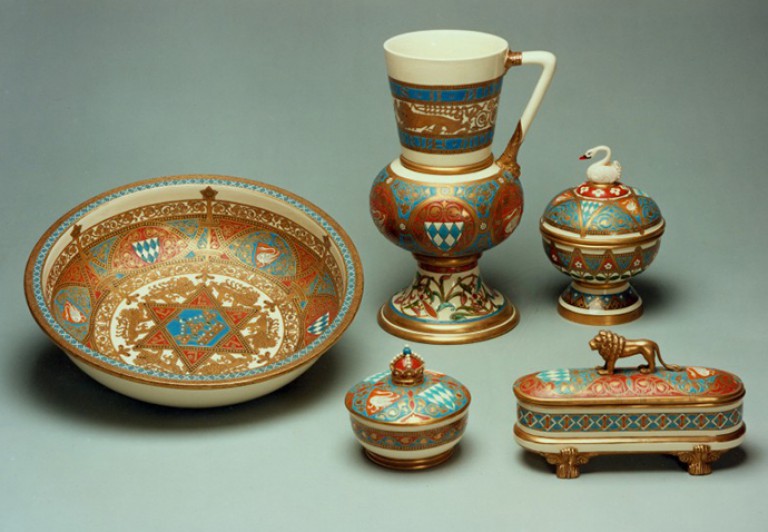 The first signs of ceramic sanitary-ware production are seen. The Wallerfangen Faiencerie begins manufacturing "water pipe articles", Villeroy & Boch's first items of ceramic sanitary ware. Washing vessels, including numerous specially-produced items, for example, for Louis II, the Bavarian "fairytale" King.
The first signs of ceramic sanitary-ware production are seen. The Wallerfangen Faiencerie begins manufacturing "water pipe articles", Villeroy & Boch's first items of ceramic sanitary ware. Washing vessels, including numerous specially-produced items, for example, for Louis II, the Bavarian "fairytale" King. -
1879
Artistic terracotta items
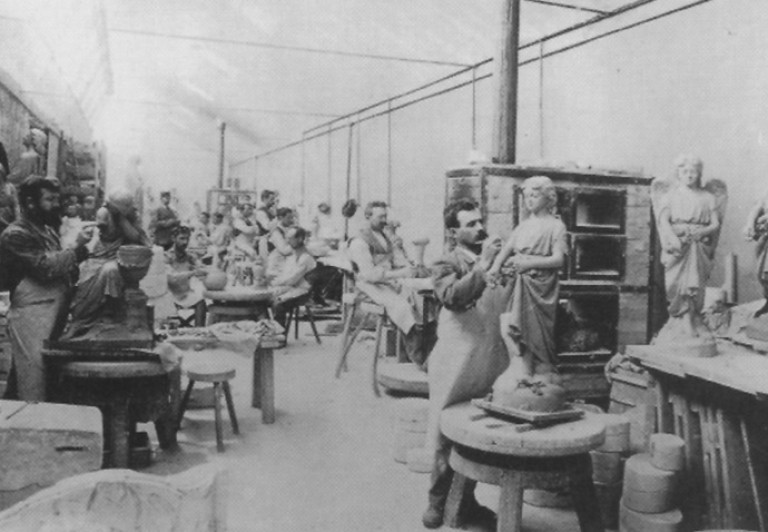 Villeroy & Boch takes over and modernises an earthenware factory in Merzig, where it launches another new range of products – artistic terracotta items. Management of the terracotta atelier is assumed by Professor Alexander Schmidt from Thuringia. At the same time the technicians successfully improve the material so that its robust and weatherproof qualities are superior to those of other building materials, even natural stone. This building adornment known as terracotta, is marketed throughout the world and used, above all, for prestigious properties such as stately homes, cathedrals, banks and castles, one of which was Schloß Herrenchiemsee. Examples of this form of architectural ceramic still in existence today have lost none of their original beauty, while stoneware ornaments would now be weathered and covered in moss.
Villeroy & Boch takes over and modernises an earthenware factory in Merzig, where it launches another new range of products – artistic terracotta items. Management of the terracotta atelier is assumed by Professor Alexander Schmidt from Thuringia. At the same time the technicians successfully improve the material so that its robust and weatherproof qualities are superior to those of other building materials, even natural stone. This building adornment known as terracotta, is marketed throughout the world and used, above all, for prestigious properties such as stately homes, cathedrals, banks and castles, one of which was Schloß Herrenchiemsee. Examples of this form of architectural ceramic still in existence today have lost none of their original beauty, while stoneware ornaments would now be weathered and covered in moss. -
1888
Vincent van Gogh
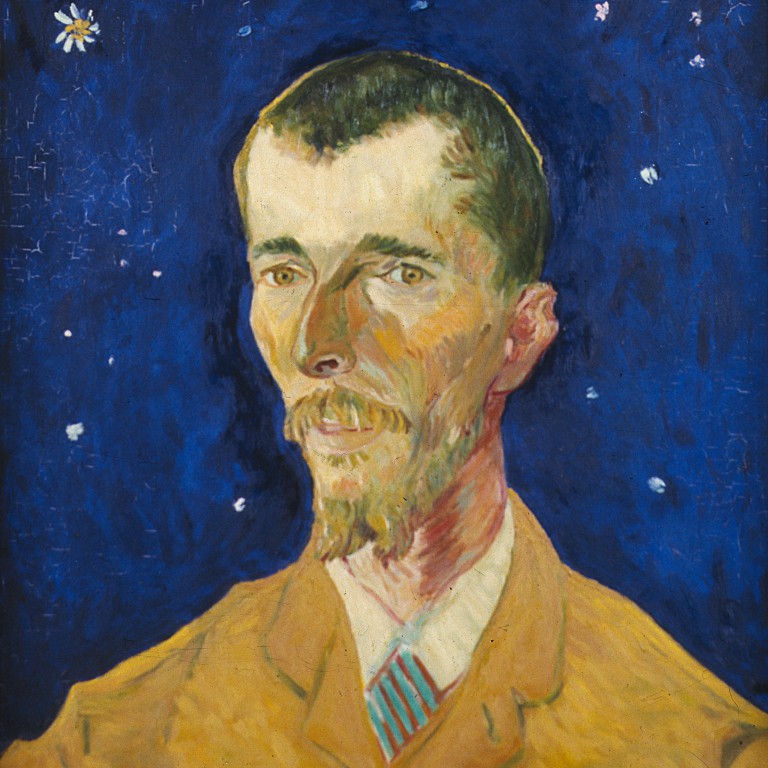 Vincent van Gogh paints a portrait of his friend Eugène Boch, which today hangs in the Musèe d'Orsay in Paris. Van Gogh always carried this painting, entitled Der Dichter (The Poet) with him on his travels. After his death, van Gogh's sister-in-law gives the painting as a gift to Eugène who bequeaths it to the Louvre in 1942. Anna and Eugène Boch are themselves neo-impressionists and have frequent contact with prominent artists of their day, such as Toulouse-Lautrec, Ensor and van Gogh. Van Gogh's letters are proof of the deep friendship he shared with Eugène.
Vincent van Gogh paints a portrait of his friend Eugène Boch, which today hangs in the Musèe d'Orsay in Paris. Van Gogh always carried this painting, entitled Der Dichter (The Poet) with him on his travels. After his death, van Gogh's sister-in-law gives the painting as a gift to Eugène who bequeaths it to the Louvre in 1942. Anna and Eugène Boch are themselves neo-impressionists and have frequent contact with prominent artists of their day, such as Toulouse-Lautrec, Ensor and van Gogh. Van Gogh's letters are proof of the deep friendship he shared with Eugène. -
1890
Project business begins
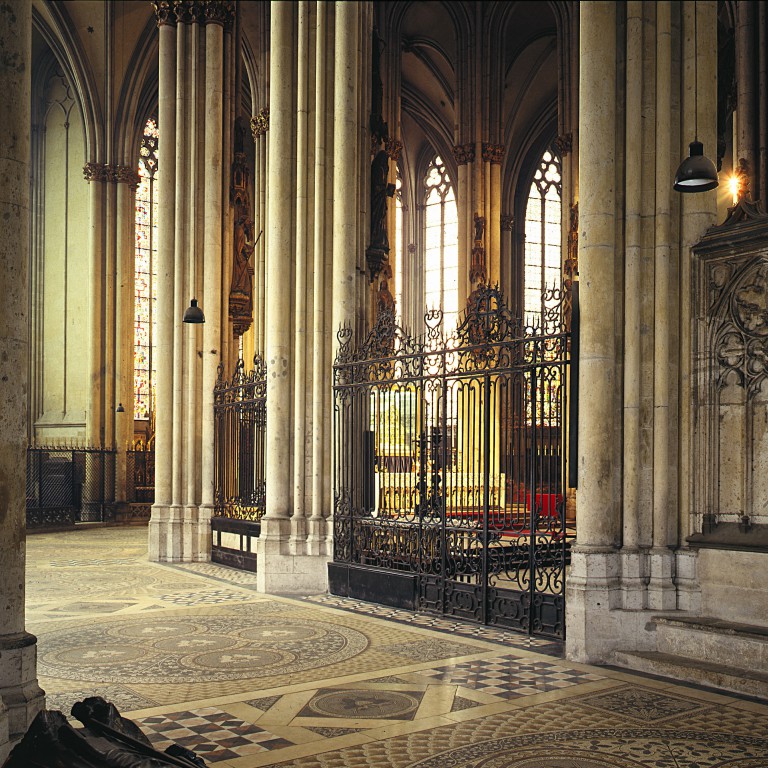 Villeroy & Boch creates a floor mosaic for Cologne Cathedral, a building of high national symbolic value which was restored in the 19th century. This 1,300 squaremetre mosaic is produced and laid within a period of five years. Besides the industrial manufacture of crockery and tiles, Villeroy & Boch's ateliers create numerous items made specially to order. The company becomes a supplier – above all of crockery – to European ruling houses and to the upper classes. In the construction sector too, numerous prestigious premises all over the world are built or equipped with Villeroy & Boch products, e.g. the Bolshoi Theatre in Moscow or the Castle of the Prince of Thurn and Taxis in Regensburg. In the commercial sector, swimming pools, hotels, banks and hospitals, etc. have been equipped with products from Villeroy & Boch from the 19th century through to this day. Its own capacity together with the artistic and technical know-how of its ateliers and planning offices enable the company to design and realise highly individual projects.
Villeroy & Boch creates a floor mosaic for Cologne Cathedral, a building of high national symbolic value which was restored in the 19th century. This 1,300 squaremetre mosaic is produced and laid within a period of five years. Besides the industrial manufacture of crockery and tiles, Villeroy & Boch's ateliers create numerous items made specially to order. The company becomes a supplier – above all of crockery – to European ruling houses and to the upper classes. In the construction sector too, numerous prestigious premises all over the world are built or equipped with Villeroy & Boch products, e.g. the Bolshoi Theatre in Moscow or the Castle of the Prince of Thurn and Taxis in Regensburg. In the commercial sector, swimming pools, hotels, banks and hospitals, etc. have been equipped with products from Villeroy & Boch from the 19th century through to this day. Its own capacity together with the artistic and technical know-how of its ateliers and planning offices enable the company to design and realise highly individual projects. -
1899
Large-scale production of bathtubs and toilets
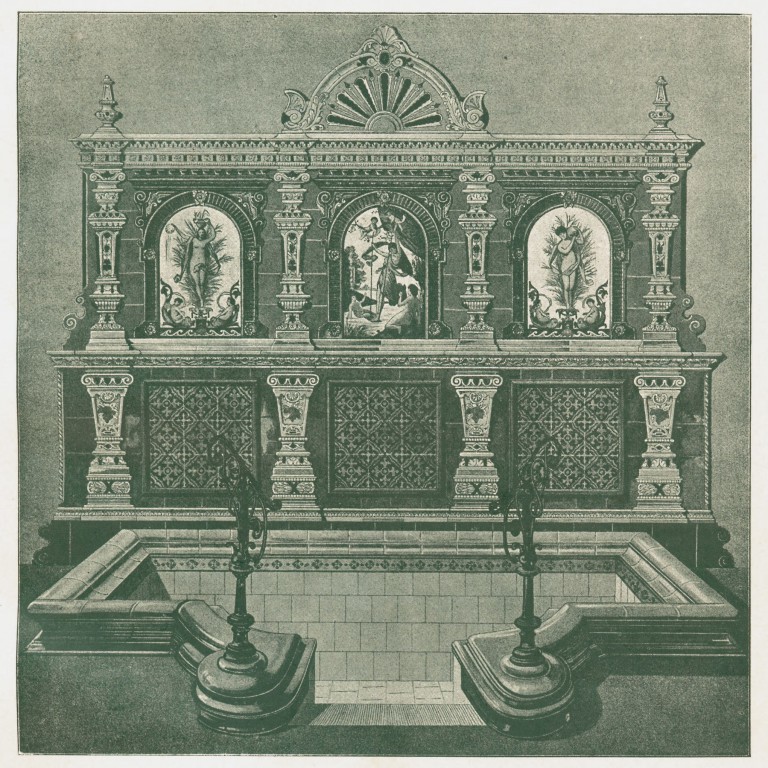 In the 19th century, significant scientific insights create the foundations of modern hygiene. An essential contribution is made above all by sanitary products, which are still not widely used around 1900. At this time Villeroy & Boch starts large-scale production of bathtubs and toilets. A key reason for this undertaking is the improvements the company had successfully made in the production technique and the material. The key to large-scale series lay in the slip casting technique used to cast the liquefied ceramic in moulds. When Villeroy & Boch then also introduced traditional fireclay – a particularly hard ceramic which hardly warps during firing – into sanitary-ware production, large-scale manufacture could commence. Bathroom furnishings became affordable for the average home. This is an important contribution towards democratising bathing and hygiene.
In the 19th century, significant scientific insights create the foundations of modern hygiene. An essential contribution is made above all by sanitary products, which are still not widely used around 1900. At this time Villeroy & Boch starts large-scale production of bathtubs and toilets. A key reason for this undertaking is the improvements the company had successfully made in the production technique and the material. The key to large-scale series lay in the slip casting technique used to cast the liquefied ceramic in moulds. When Villeroy & Boch then also introduced traditional fireclay – a particularly hard ceramic which hardly warps during firing – into sanitary-ware production, large-scale manufacture could commence. Bathroom furnishings became affordable for the average home. This is an important contribution towards democratising bathing and hygiene. -
1900
BETWEEN WORLD WARS, INNOVATIONS AND EXPANSION
-
1920
The First World War and the consequences
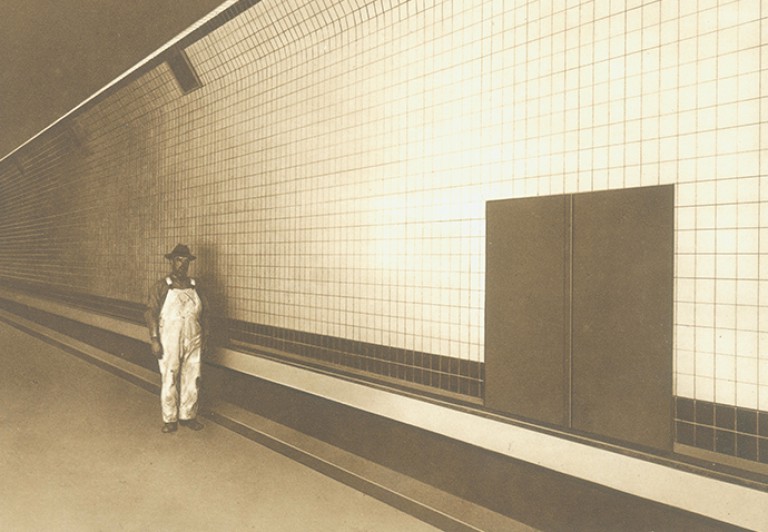 As a result of World War I, the Saar Region is detached from the German Reich. Since the factories in that area are no longer available to supply the German market, factories are purchased in Bonn, Torgau and Breslau. In the same year the Holland Tunnel is built under the Hudson River in the USA, between New York and New Jersey. Villeroy & Boch supplies 10,000 square metres of tiles for this construction (see photo).
As a result of World War I, the Saar Region is detached from the German Reich. Since the factories in that area are no longer available to supply the German market, factories are purchased in Bonn, Torgau and Breslau. In the same year the Holland Tunnel is built under the Hudson River in the USA, between New York and New Jersey. Villeroy & Boch supplies 10,000 square metres of tiles for this construction (see photo). -
1930
The Bauhaus and art déco styles dominate design
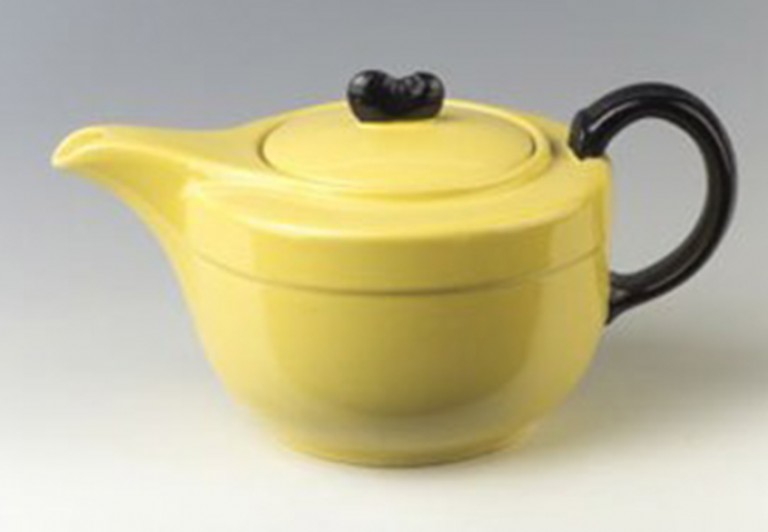 Based on a rationally mundane, purpose-orientated styling, the Bauhaus style and the elegantly luxurious art déco style dominate the design of the Twenties and Thirties. This is also reflected in the Villeroy & Boch product range during these decades. Around the turn of the century, Henry van de Velde – founder of the "Kunstgewerbliche Seminar", the forerunner organisation to Bauhaus – had already created designs for Villeroy & Boch. In 1919, together with Walter Gropius, he set up the Bauhaus. Peter Behrens – co-founder of the Deutsche Werkbundes, (federation of architects, artists and builders) – also creates crockery and tile designs for the company.
Based on a rationally mundane, purpose-orientated styling, the Bauhaus style and the elegantly luxurious art déco style dominate the design of the Twenties and Thirties. This is also reflected in the Villeroy & Boch product range during these decades. Around the turn of the century, Henry van de Velde – founder of the "Kunstgewerbliche Seminar", the forerunner organisation to Bauhaus – had already created designs for Villeroy & Boch. In 1919, together with Walter Gropius, he set up the Bauhaus. Peter Behrens – co-founder of the Deutsche Werkbundes, (federation of architects, artists and builders) – also creates crockery and tile designs for the company. -
1939
Second World War
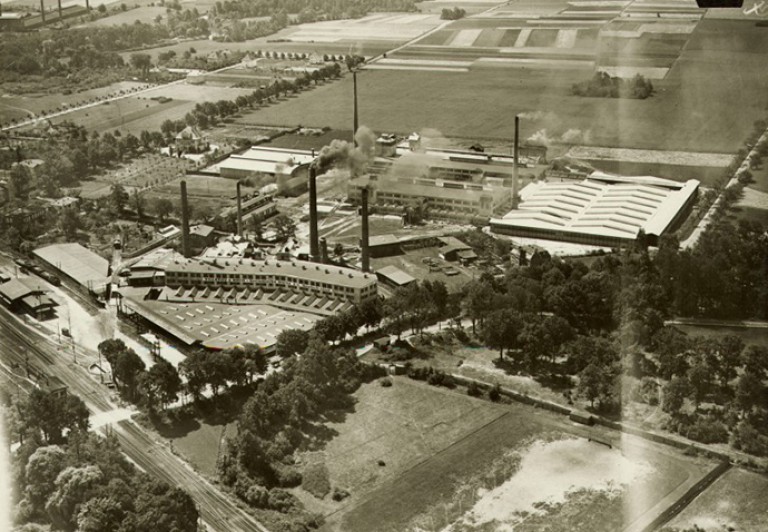 Villeroy & Boch's factories in all parts of Germany suffer considerable damage during World War II. When the war ends, the factories in Breslau, Dresden and Torgau are expropriated and the factories in Saarland integrated into the French economic region until the monetary reform in 1959.
Villeroy & Boch's factories in all parts of Germany suffer considerable damage during World War II. When the war ends, the factories in Breslau, Dresden and Torgau are expropriated and the factories in Saarland integrated into the French economic region until the monetary reform in 1959. -
1959
New types of porcelain emerge
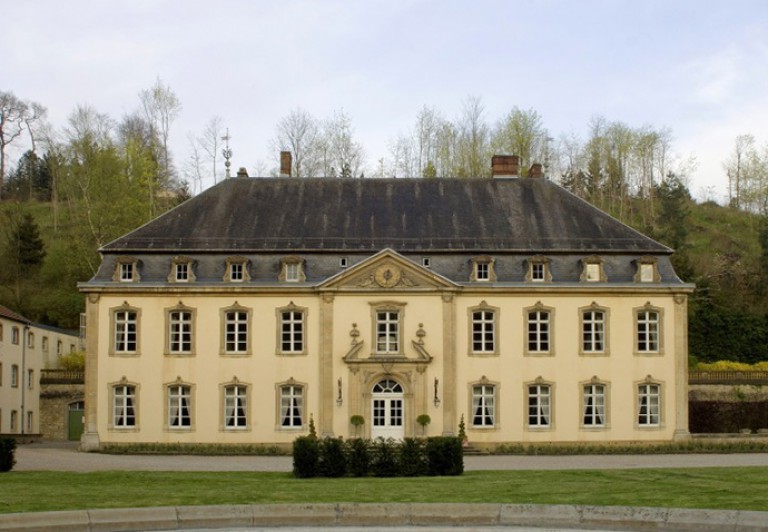 Production of vitreous porcelain begins at Septfontaines in Luxembourg. Owing to its hardness and resistance to scratches, this material is also used in the catering sector. In addition, Villeroy & Boch is later able to successfully develop the material to produce Fine Vilbo China, which combines refined porcelain white with the outstanding functional qualities of vitreous porcelain.
Production of vitreous porcelain begins at Septfontaines in Luxembourg. Owing to its hardness and resistance to scratches, this material is also used in the catering sector. In addition, Villeroy & Boch is later able to successfully develop the material to produce Fine Vilbo China, which combines refined porcelain white with the outstanding functional qualities of vitreous porcelain. -
1960
Local Engagement
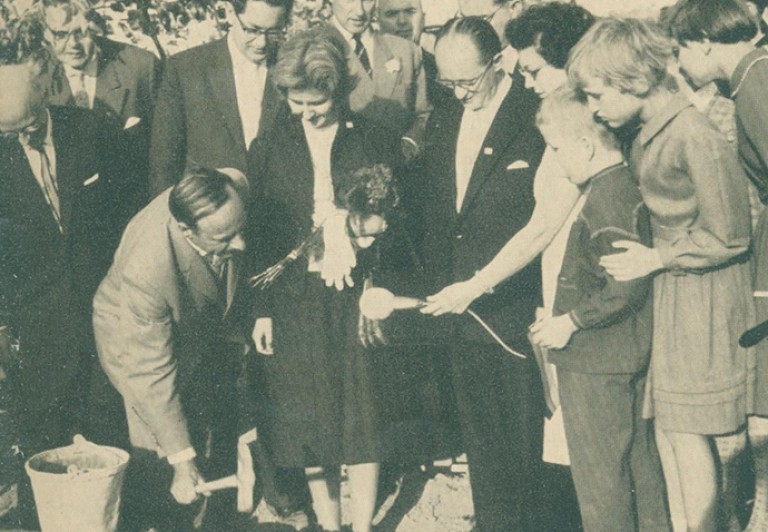 Opening of the SOS-Kinderdorf (family-structured village for orphans) in Hilbringen – the third of its kind in Germany – in the presence of the wife of Mr Lübke, the Federal President. The Kinderdorf is built on the initiative, and with the extensive support of Luitwin II von Boch and his wife, Beatrice. Even construction planning for Saarland's Kinderdorf is in the hands of Villeroy & Boch's construction department.
Opening of the SOS-Kinderdorf (family-structured village for orphans) in Hilbringen – the third of its kind in Germany – in the presence of the wife of Mr Lübke, the Federal President. The Kinderdorf is built on the initiative, and with the extensive support of Luitwin II von Boch and his wife, Beatrice. Even construction planning for Saarland's Kinderdorf is in the hands of Villeroy & Boch's construction department. -
1971
Overseas activities intensify
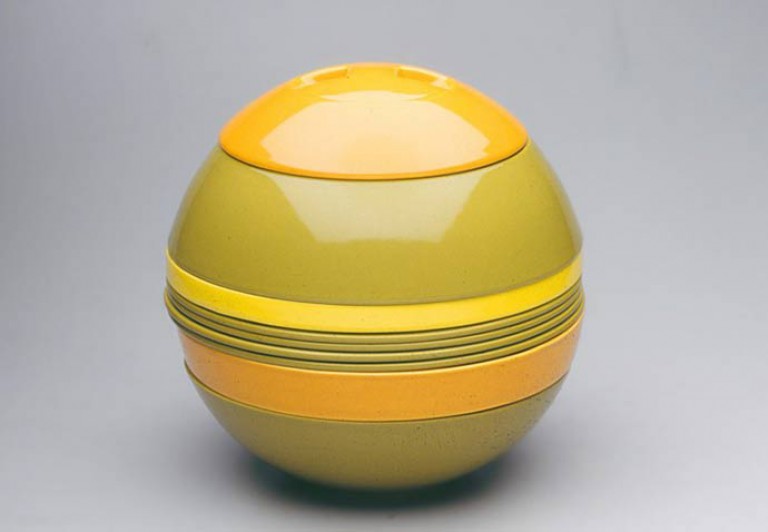 The first large-scale shipment of crockery goes to Japan. At the same time exports to the USA are stepped up. A series of special editions is created for this market. The crockery sector's name change to Tableware signalises the move towards a new integral range. Designer Helen von Boch creates emphatically modern series, some of which are inspired by the Far East, the best known of which is the Kugel (globe). Concealed inside is a complete dinner service and its production requires the highest degree of technical skill.
The first large-scale shipment of crockery goes to Japan. At the same time exports to the USA are stepped up. A series of special editions is created for this market. The crockery sector's name change to Tableware signalises the move towards a new integral range. Designer Helen von Boch creates emphatically modern series, some of which are inspired by the Far East, the best known of which is the Kugel (globe). Concealed inside is a complete dinner service and its production requires the highest degree of technical skill. -
1975
Cooperation with Luigi Colani
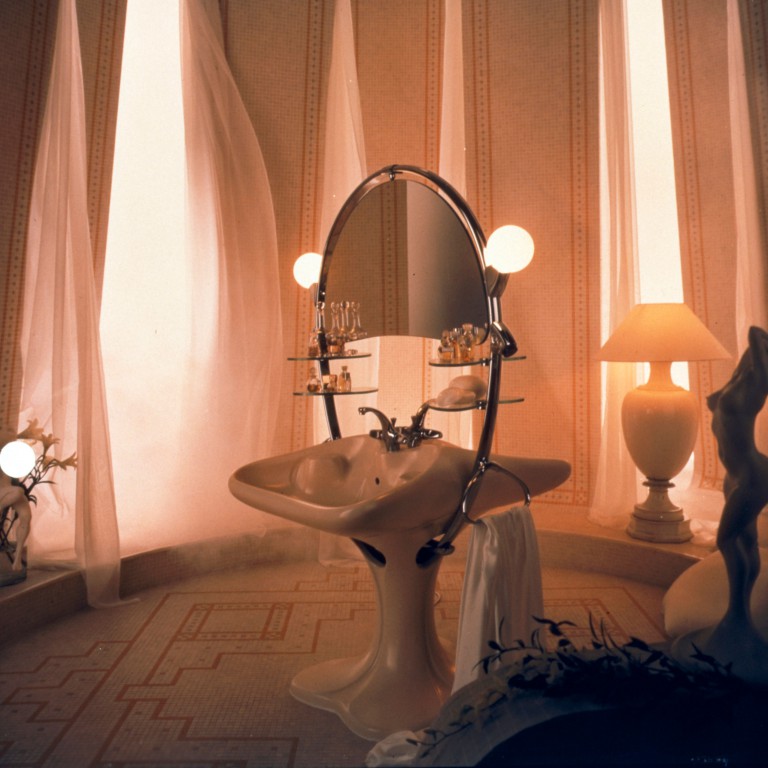 Commissioned by Villeroy & Boch, Luigi Colani develops a completely new bathroom concept which totally redefines the bathroom as a living space and place for regeneration. He begins by concentrating on the room's ergonomic aspect, and achieves optimised functionality and distinctive colourfulness in all areas. It is also the first concept which creates a consistent line of design for every bathroom element. In so doing he provides inspiration for the designs of decades to come and revolutionises the bathroom industry.
Commissioned by Villeroy & Boch, Luigi Colani develops a completely new bathroom concept which totally redefines the bathroom as a living space and place for regeneration. He begins by concentrating on the room's ergonomic aspect, and achieves optimised functionality and distinctive colourfulness in all areas. It is also the first concept which creates a consistent line of design for every bathroom element. In so doing he provides inspiration for the designs of decades to come and revolutionises the bathroom industry. -
1976
First Villeroy&Boch Bone China ranges
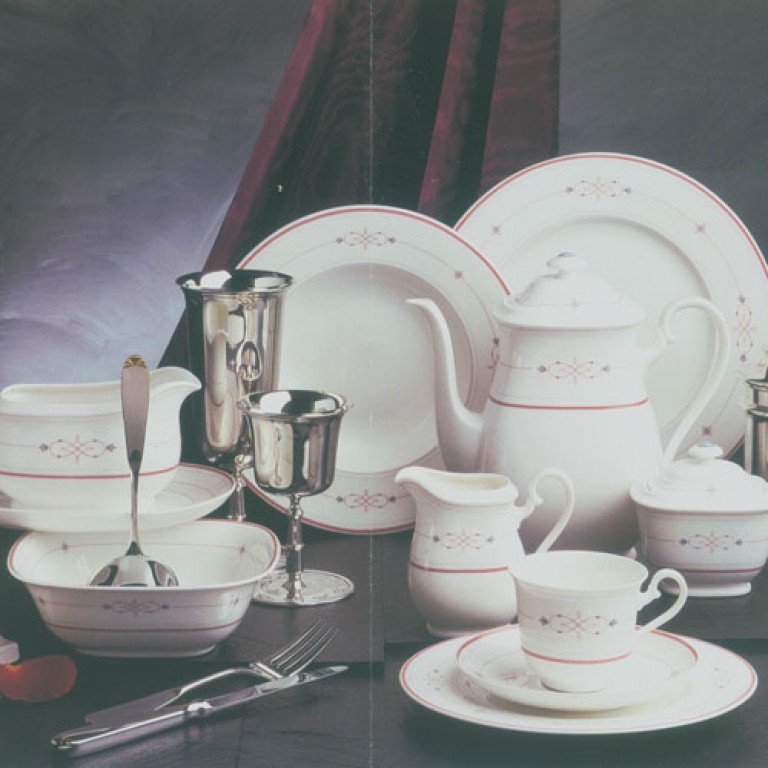 Villeroy & Boch takes over the highly-traditional Heinrich porcelain manufactory in Selb. Since 1980, this factory has manufactured bone china, which Villeroy & Boch was the first producer to market on the European Continent. (The company had already manufactured individual series as early as the 19th century.) Bone china is regarded as the most refined porcelain of all and its manufacture requires special technical know-how. This high-quality porcelain not only extends the company's range of materials, but also enables new markets to be opened up.
Villeroy & Boch takes over the highly-traditional Heinrich porcelain manufactory in Selb. Since 1980, this factory has manufactured bone china, which Villeroy & Boch was the first producer to market on the European Continent. (The company had already manufactured individual series as early as the 19th century.) Bone china is regarded as the most refined porcelain of all and its manufacture requires special technical know-how. This high-quality porcelain not only extends the company's range of materials, but also enables new markets to be opened up. -
1980
The papal tableware
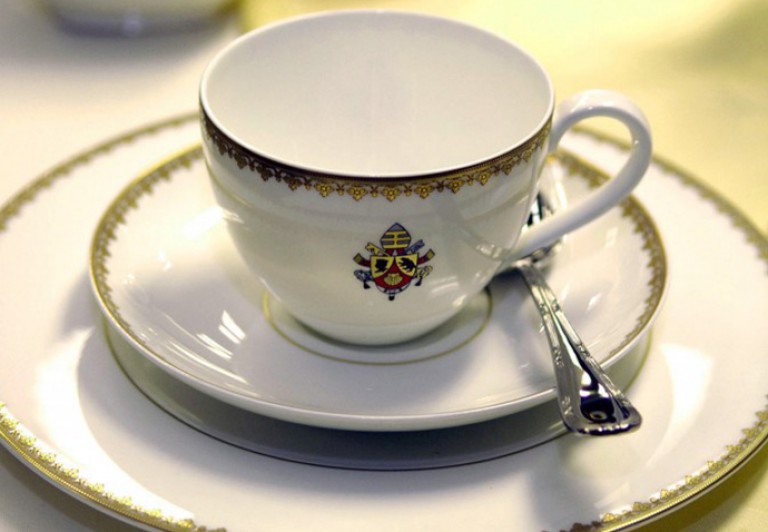 Villeroy & Boch continues the tradition of its own subsidiary Heinrich, which has supplied popes and renowned dynasties since 1955, and manufactures papal tableware: in 1980 Wendelin von Boch presents the crockery at a private audience with Pope John Paul II in 1980, and with Pope Benedict XVI in 2007.
Villeroy & Boch continues the tradition of its own subsidiary Heinrich, which has supplied popes and renowned dynasties since 1955, and manufactures papal tableware: in 1980 Wendelin von Boch presents the crockery at a private audience with Pope John Paul II in 1980, and with Pope Benedict XVI in 2007. -
1982
Restructuring the company
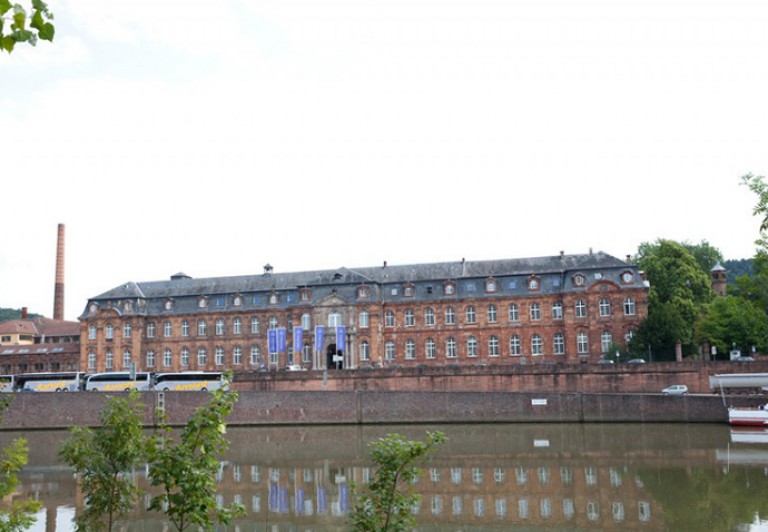 The Villeroy & Boch company is restructured. In view of sustained stagnation in the construction industry and a tremendous concentration in the retail sector, market development is given a new basis. Customer support and supply is no longer carried out by the individual factories, but centrally. The company is divided into three divisions: Tiles, Sanitary Ware and Tableware/Crystal. By using this "single source" strategy, Villeroy & Boch is able to respond to the requirements and wishes of its market partners in the retail, trade and commercial sectors promptly, flexibly and with a close focus on customer needs.
The Villeroy & Boch company is restructured. In view of sustained stagnation in the construction industry and a tremendous concentration in the retail sector, market development is given a new basis. Customer support and supply is no longer carried out by the individual factories, but centrally. The company is divided into three divisions: Tiles, Sanitary Ware and Tableware/Crystal. By using this "single source" strategy, Villeroy & Boch is able to respond to the requirements and wishes of its market partners in the retail, trade and commercial sectors promptly, flexibly and with a close focus on customer needs. -
1985
Advertising campaigns with Helmut Newton
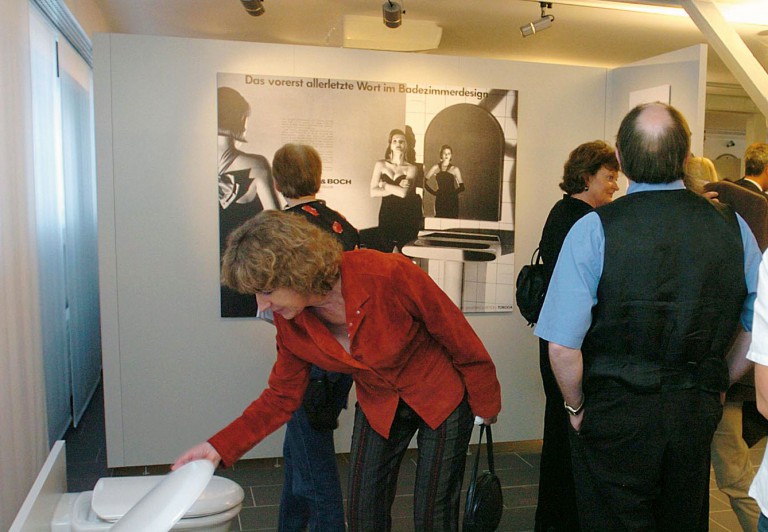 Villeroy & Boch launches one of the most spectacular and artistically appealing advertising campaigns of the Eighties. Star photographer Helmut Newton is engaged to create 14 advertisement motifs for the Sanitary Ware Division. In the resulting black and white photographs, long-legged models present the new bathroom products in Newton’s signature style. The campaign is voted campaign of the year by a jury of advertising experts from Cosmopolitan magazine. A special exhibition, "Ahead of their time – Helmut Newton and Villeroy & Boch", held 20 years later at the Ceramics Museum looks back at the pioneering, once provocative advertising campaign.
Villeroy & Boch launches one of the most spectacular and artistically appealing advertising campaigns of the Eighties. Star photographer Helmut Newton is engaged to create 14 advertisement motifs for the Sanitary Ware Division. In the resulting black and white photographs, long-legged models present the new bathroom products in Newton’s signature style. The campaign is voted campaign of the year by a jury of advertising experts from Cosmopolitan magazine. A special exhibition, "Ahead of their time – Helmut Newton and Villeroy & Boch", held 20 years later at the Ceramics Museum looks back at the pioneering, once provocative advertising campaign. -
1986
New impulses with Mix & Match
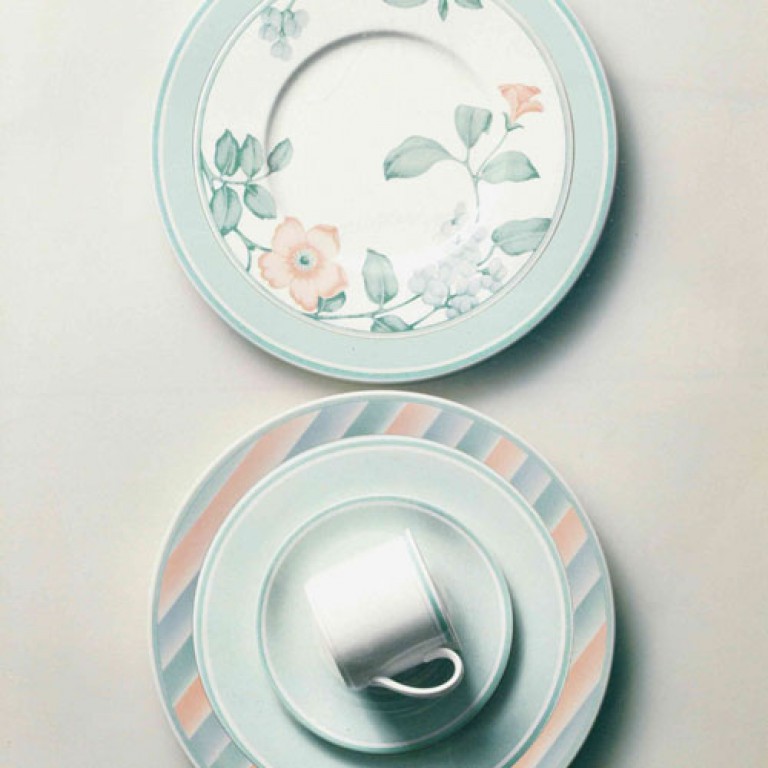 Changes in society combined with a rising number of single households give rise to new lifestyle and consumer habits which also affect the tableware sector. Villeroy & Boch's innovative Mix & Match concept is a response to this changed way of life. It enables patterns to be freely combined and subsequent purchases to made according to individual demand, with the effect that consumers are not compelled to buy a 12-piece service. On the contrary, they are able to use variable, coordinated tableware designs to create a constantly new look for their laid table. The Mix & Match products, which introduce new market stimuli, become an international success. They continue to influence the appearance of table settings and above all, modern tableware design to this day.
Changes in society combined with a rising number of single households give rise to new lifestyle and consumer habits which also affect the tableware sector. Villeroy & Boch's innovative Mix & Match concept is a response to this changed way of life. It enables patterns to be freely combined and subsequent purchases to made according to individual demand, with the effect that consumers are not compelled to buy a 12-piece service. On the contrary, they are able to use variable, coordinated tableware designs to create a constantly new look for their laid table. The Mix & Match products, which introduce new market stimuli, become an international success. They continue to influence the appearance of table settings and above all, modern tableware design to this day. -
1989
Specialising in hotel porcelain
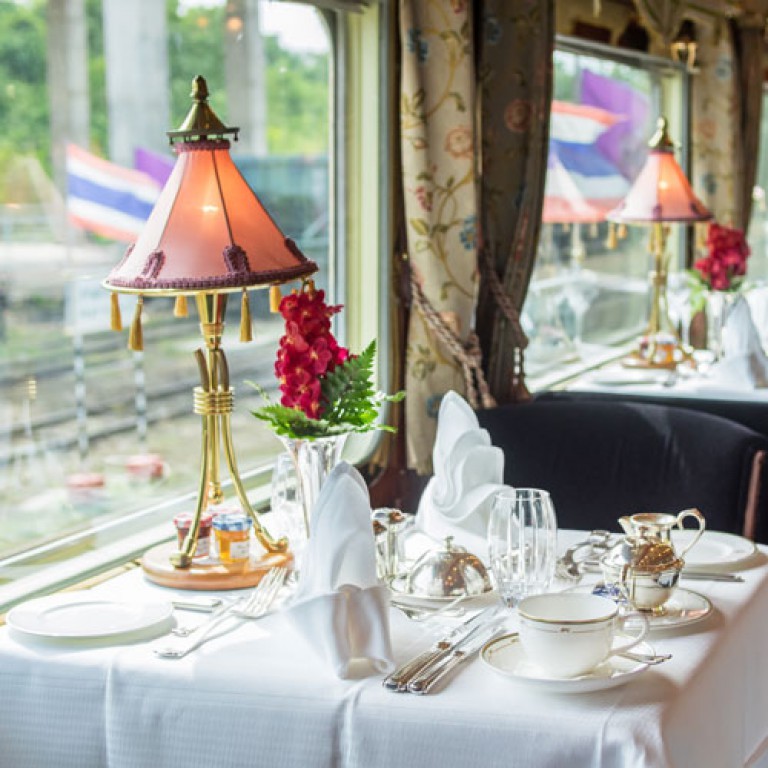 A second tableware factory, specialised in the manufacture of hotel porcelain, is put into operation in Luxembourg. Today, the Hotel Division is one of the world's most successful suppliers of tableware for the hotel and catering sector. This is not only because of its extensive, high-quality range of products, but also due to its polished, sophisticated service. Its four lifestyles and special, custom-made designs allow Villeroy & Boch to respond individually to the character of each respective establishment. Middle to high-class hotels and restaurants throughout Europe, America and Asia are equipped with Villeroy & Boch tableware.
A second tableware factory, specialised in the manufacture of hotel porcelain, is put into operation in Luxembourg. Today, the Hotel Division is one of the world's most successful suppliers of tableware for the hotel and catering sector. This is not only because of its extensive, high-quality range of products, but also due to its polished, sophisticated service. Its four lifestyles and special, custom-made designs allow Villeroy & Boch to respond individually to the character of each respective establishment. Middle to high-class hotels and restaurants throughout Europe, America and Asia are equipped with Villeroy & Boch tableware. -
1990
Villeroy&Boch at the stock exchange
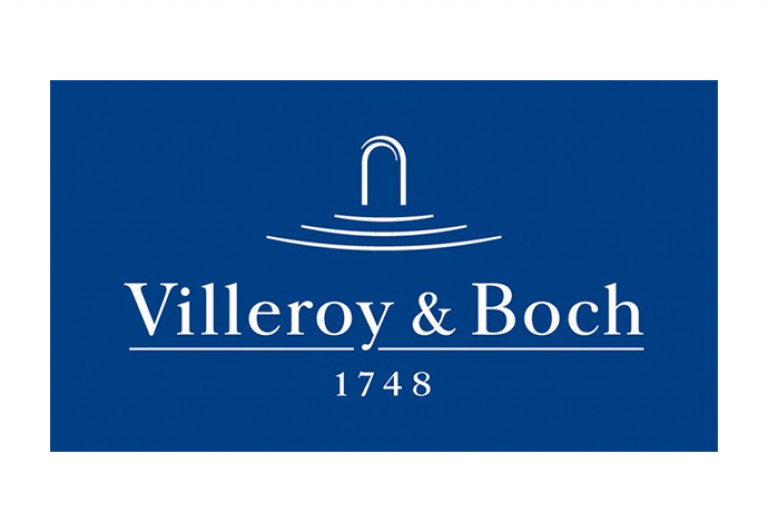 Following thorough company restructuring, strategic reorientation and the conversion of Villeroy & Boch KG into a public limited company, Villeroy & Boch starts trading on the stock exchange. This step marks the beginning of a new phase of opening up capital markets.
Following thorough company restructuring, strategic reorientation and the conversion of Villeroy & Boch KG into a public limited company, Villeroy & Boch starts trading on the stock exchange. This step marks the beginning of a new phase of opening up capital markets. -
1992
Villeroy&Boch expands in Hungary and Romania
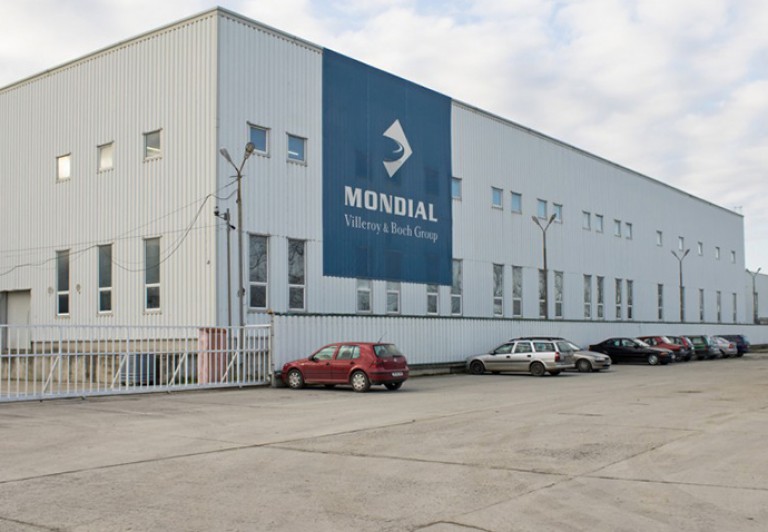 Villeroy & Boch acquires a majority interest in Aföldi Porcelàngyàr, the largest manufacturer of ceramic sanitary ware in Hungary, and four years later in Mondial S.A., the Romanian manufacturer of ceramic sanitary ware. In the years which follow the company makes further strategic acquisitions which enable Villeroy & Boch to extend its product portfolio and at the same time open up the respective domestic markets. (See 1999)
Villeroy & Boch acquires a majority interest in Aföldi Porcelàngyàr, the largest manufacturer of ceramic sanitary ware in Hungary, and four years later in Mondial S.A., the Romanian manufacturer of ceramic sanitary ware. In the years which follow the company makes further strategic acquisitions which enable Villeroy & Boch to extend its product portfolio and at the same time open up the respective domestic markets. (See 1999) -
1998
The company's 250th anniversary
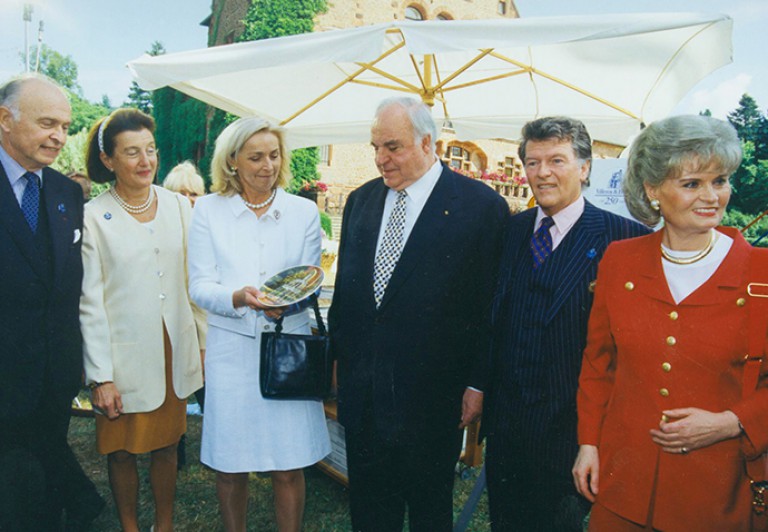 The company's 250th anniversary. Many leading European politicians take part in the large-scale celebration gala in Mettlach, including the Federal Chancellor at that time, Helmut Kohl, Luxembourg's Minister President, Jean-Claude Juncker, France's Minister of Finance, Mr Strauss-Kahn and Saarland's Minister President, Oscar Lafontaine. In his official address, Helmut Kohl described Villeroy & Boch as " Europeans of the first generation". In the same year, Wendelin von Boch – the founder-family's eighth generation – is appointed Chairman Management Board. Under his direction further modernisation measures are carried out within the Group: he initiates the change in Villeroy & Boch's corporate direction, converting it from a production-oriented ceramics producer to a lifestyle supplier. At the heart of this paradigm shift is the sales and marketing concept The House of Villeroy & Boch, the extensive implementation of which is one of the Group's strategic goals. This concept is based on an integral, extremely differentiated range, offering individual combination alternatives. An innovative presentation of products in realistic, emotionally appealing room situations is tailored to suit each lifestyle. In order to round off this consistently integral range, Wendelin von Boch continues the diversification strategy by making further acquisitions. In view of the changed market conditions throughout the world, von Boch also pushes ahead with the company's internationalisation and globalisation in the years which follow and focuses activities on the brand.
The company's 250th anniversary. Many leading European politicians take part in the large-scale celebration gala in Mettlach, including the Federal Chancellor at that time, Helmut Kohl, Luxembourg's Minister President, Jean-Claude Juncker, France's Minister of Finance, Mr Strauss-Kahn and Saarland's Minister President, Oscar Lafontaine. In his official address, Helmut Kohl described Villeroy & Boch as " Europeans of the first generation". In the same year, Wendelin von Boch – the founder-family's eighth generation – is appointed Chairman Management Board. Under his direction further modernisation measures are carried out within the Group: he initiates the change in Villeroy & Boch's corporate direction, converting it from a production-oriented ceramics producer to a lifestyle supplier. At the heart of this paradigm shift is the sales and marketing concept The House of Villeroy & Boch, the extensive implementation of which is one of the Group's strategic goals. This concept is based on an integral, extremely differentiated range, offering individual combination alternatives. An innovative presentation of products in realistic, emotionally appealing room situations is tailored to suit each lifestyle. In order to round off this consistently integral range, Wendelin von Boch continues the diversification strategy by making further acquisitions. In view of the changed market conditions throughout the world, von Boch also pushes ahead with the company's internationalisation and globalisation in the years which follow and focuses activities on the brand. -
1999
Core Business of the Group
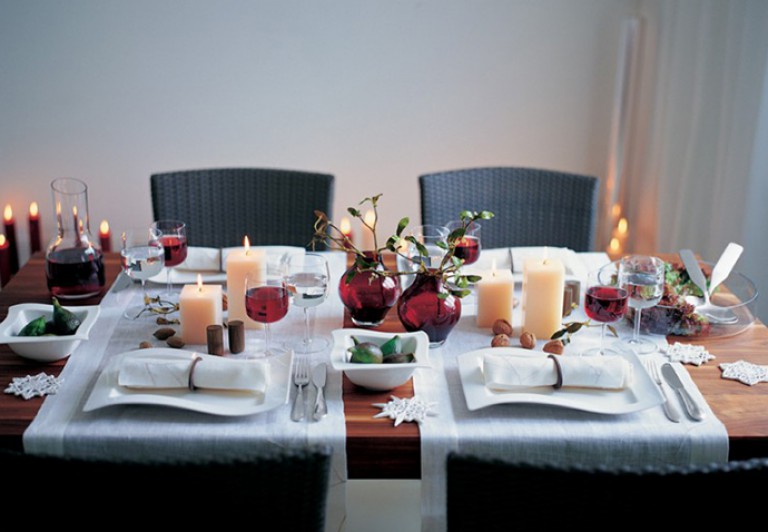 As a lifestyle supplier Villeroy & Boch focuses on a comprehensive, diversified range which allows the supply of complex interior design solutions. "The single-source bathroom", "the completely-laid table" and "tiles for the private and commercial sector" constitute the Group's core business. In order to be able to offer this comprehensive product range, Villeroy & Boch makes further acquisitions: in 1999, Ucosan B.V., Netherlands, manufacturer of plastic bathtubs, whirlpool and steam-shower systems, in 2000, Gustavsberg, Sweden, manufacturer of bathroom ceramics and fittings and in 2001, db – Das Bad, Austrian manufacturer of bathroom furniture.
As a lifestyle supplier Villeroy & Boch focuses on a comprehensive, diversified range which allows the supply of complex interior design solutions. "The single-source bathroom", "the completely-laid table" and "tiles for the private and commercial sector" constitute the Group's core business. In order to be able to offer this comprehensive product range, Villeroy & Boch makes further acquisitions: in 1999, Ucosan B.V., Netherlands, manufacturer of plastic bathtubs, whirlpool and steam-shower systems, in 2000, Gustavsberg, Sweden, manufacturer of bathroom ceramics and fittings and in 2001, db – Das Bad, Austrian manufacturer of bathroom furniture. -
2000
TAKING NEW PATHS IN THE NEW MILLENNIUM
-
2001
Expansion and automation
 Villeroy & Boch takes over Vagnerplast, the Czech manufacturer of plastic bathtubs and shower trays, whirlpool systems and shower cubicles. Here, as at other Eastern European locations, products which require a high level of workforce input are manufactured, while the factories in Central Europe are automated, thus ensuring a secure future. Group restructuring focuses on these manufacturing improvements, which is based on a combination of highly-automated production in the West and cost-effective production at the Eastern European locations.
Villeroy & Boch takes over Vagnerplast, the Czech manufacturer of plastic bathtubs and shower trays, whirlpool systems and shower cubicles. Here, as at other Eastern European locations, products which require a high level of workforce input are manufactured, while the factories in Central Europe are automated, thus ensuring a secure future. Group restructuring focuses on these manufacturing improvements, which is based on a combination of highly-automated production in the West and cost-effective production at the Eastern European locations. -
2002
Modern exhibition concept in Ceramics Museum Mettlach
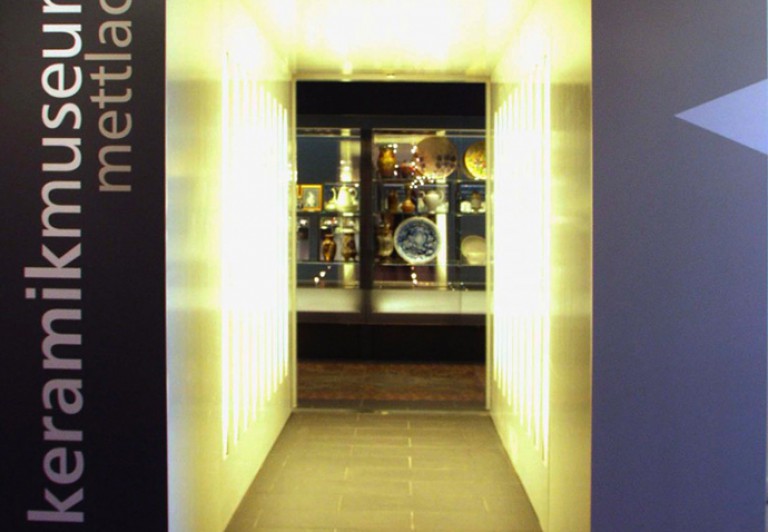 The Keramikmuseum Mettlach (Mettlach Ceramics Museum) provides a new home for the extensive ceramics collection. Presenting both the tradition and modernity of the Villeroy & Boch company in an exciting, dramatic relationship, this directional exhibition concept creates the ideal setting for the valuable exhibits from the last four centuries. Fine examples give visitors a first-hand experience of the change in everyday culture. The Villeroy & Boch Kinderland is officially opened in the Schaumberger Hof Therapy Centre in Tholey/Saar. Here, patients with their children are given professional help as part of their addiction therapy so that they can get to grips with the consequences of their illness and resocialise more easily. The funds were raised by the initiative Verlassene vergessene Kinder (abandoned, forgotten children) which was launched by Villeroy & Boch on the occasion of the company's 250th anniversary in 1998. Employees, works council and corporate management are involved in this project and they will continue to provide the necessary support.
The Keramikmuseum Mettlach (Mettlach Ceramics Museum) provides a new home for the extensive ceramics collection. Presenting both the tradition and modernity of the Villeroy & Boch company in an exciting, dramatic relationship, this directional exhibition concept creates the ideal setting for the valuable exhibits from the last four centuries. Fine examples give visitors a first-hand experience of the change in everyday culture. The Villeroy & Boch Kinderland is officially opened in the Schaumberger Hof Therapy Centre in Tholey/Saar. Here, patients with their children are given professional help as part of their addiction therapy so that they can get to grips with the consequences of their illness and resocialise more easily. The funds were raised by the initiative Verlassene vergessene Kinder (abandoned, forgotten children) which was launched by Villeroy & Boch on the occasion of the company's 250th anniversary in 1998. Employees, works council and corporate management are involved in this project and they will continue to provide the necessary support. -
2003
Restoration and return of Schinkel Fountain
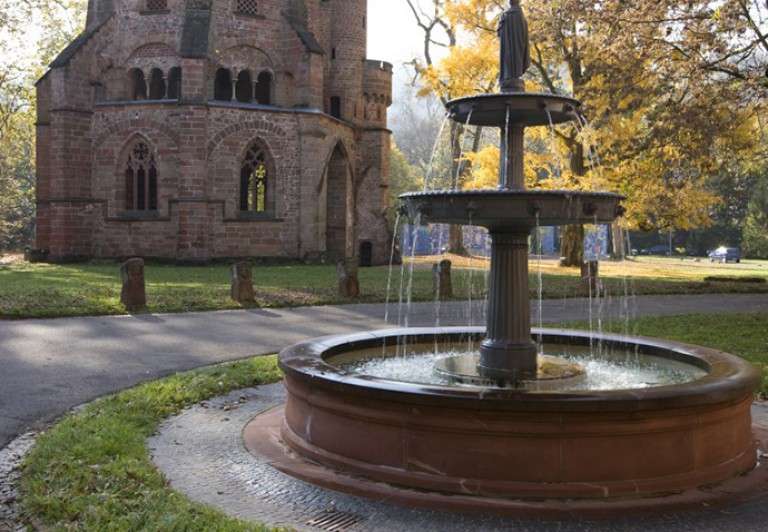 Following extensive restoration work carried out by Villeroy & Boch and the Deutsche Stiftung Denkmalschutz (German Foundation for the Protection of Ancient Monuments), the Schinkel Fountain returns to its former place in the Old Abbey Park. The fountain was given to Jean-Franҫois Boch as a present in 1838, on the occasion of a visit by Fredrick William, Crown Prince of Prussia. It was designed by the Berlin Court Architect Karl Friedrich Schinkel.
Following extensive restoration work carried out by Villeroy & Boch and the Deutsche Stiftung Denkmalschutz (German Foundation for the Protection of Ancient Monuments), the Schinkel Fountain returns to its former place in the Old Abbey Park. The fountain was given to Jean-Franҫois Boch as a present in 1838, on the occasion of a visit by Fredrick William, Crown Prince of Prussia. It was designed by the Berlin Court Architect Karl Friedrich Schinkel. -
2004
Expansion in key growth markets
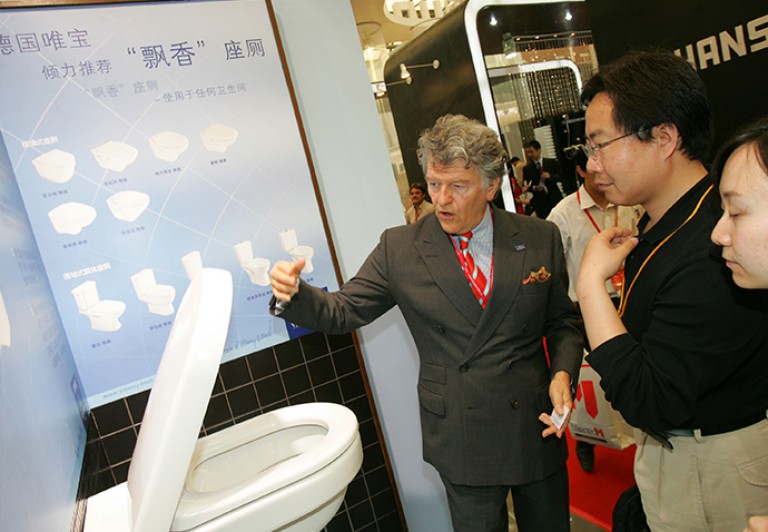 A branch of the Bathroom and Wellness Division is opened in Shanghai for the purpose of developing the Chinese market. China's brand-oriented consumers enjoy a high level of purchasing power and hold great potential for Villeroy & Boch. This branch represents a further step towards developing the company's position in major global growth markets.
A branch of the Bathroom and Wellness Division is opened in Shanghai for the purpose of developing the Chinese market. China's brand-oriented consumers enjoy a high level of purchasing power and hold great potential for Villeroy & Boch. This branch represents a further step towards developing the company's position in major global growth markets. -
2005
Innovation NewWave
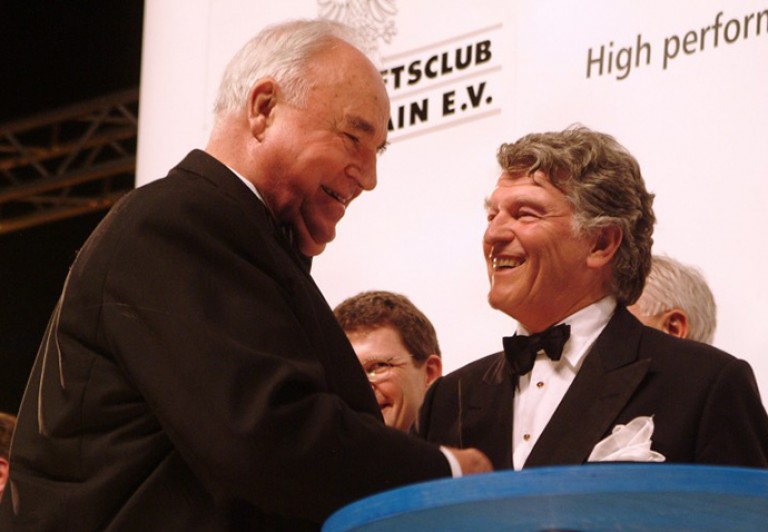 Villeroy & Boch receives the German Business Innovation Award in the "medium-sized business category" for the design and production technique of its NewWave cup. This award confirms a corporate strategy in which innovative activity holds a key position for international market success and brand image.
Villeroy & Boch receives the German Business Innovation Award in the "medium-sized business category" for the design and production technique of its NewWave cup. This award confirms a corporate strategy in which innovative activity holds a key position for international market success and brand image. -
2007
Reorganisation of the company
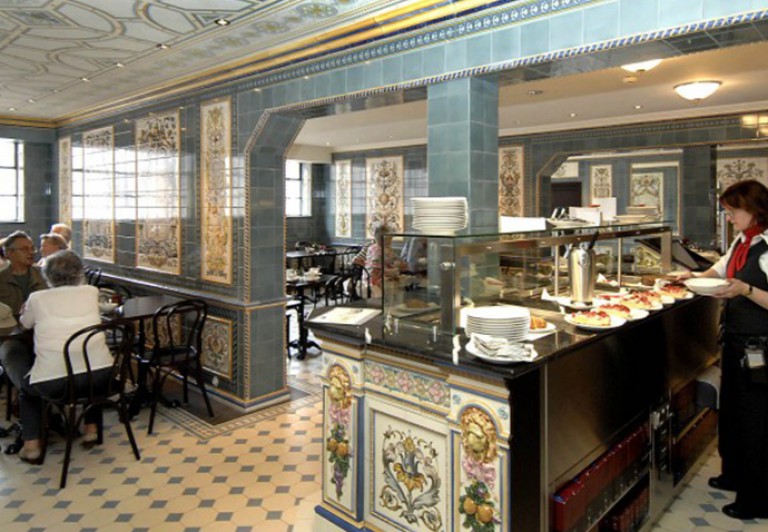 Villeroy & Boch sells 51% of V & B Fliesen GmbH to Eczacibasi – a highly-competitive Turkish industrial group. Operations continue at the factory locations in Germany and France. Management Board restructuring following the move of its Chairman, Wendelin von Boch to the Supervisory Board. He is succeeded by Frank Göring, who is responsible for the two divisions Bathroom and Wellness and Tableware. Management Board member Manfred Finger heads the Finance and Personnel divisions, and is also Director of Human Resources. The new Management Board unit, Corporate Development, is under the direction of Volker Pruschke. Distribution strategy will focus on further internationalisation: numerous new points of sale will come into existence in the tableware sector in 2007. These will be, above all, Houses of Villeroy & Boch in the new growth markets of China, India and the Arab States and will include, for example, Beijing, Bombay, Haiderabad, Casablanca, Qatar, Algeria, Jordan and Saudi Arabia. The Ceramics Museum in Mettlach acquires an unusual café, designed according to blueprints from the 19th century. During that period Villeroy & Boch designed and completed numerous commercial properties. These include the Dresden Dairy of 1892, on which the design of the café is based. Virtually all furnishing elements are made of artistically-patterned tiles. As it is such a unique example of interior design, the museum café in itself offers visitors a further art delight.
Villeroy & Boch sells 51% of V & B Fliesen GmbH to Eczacibasi – a highly-competitive Turkish industrial group. Operations continue at the factory locations in Germany and France. Management Board restructuring following the move of its Chairman, Wendelin von Boch to the Supervisory Board. He is succeeded by Frank Göring, who is responsible for the two divisions Bathroom and Wellness and Tableware. Management Board member Manfred Finger heads the Finance and Personnel divisions, and is also Director of Human Resources. The new Management Board unit, Corporate Development, is under the direction of Volker Pruschke. Distribution strategy will focus on further internationalisation: numerous new points of sale will come into existence in the tableware sector in 2007. These will be, above all, Houses of Villeroy & Boch in the new growth markets of China, India and the Arab States and will include, for example, Beijing, Bombay, Haiderabad, Casablanca, Qatar, Algeria, Jordan and Saudi Arabia. The Ceramics Museum in Mettlach acquires an unusual café, designed according to blueprints from the 19th century. During that period Villeroy & Boch designed and completed numerous commercial properties. These include the Dresden Dairy of 1892, on which the design of the café is based. Virtually all furnishing elements are made of artistically-patterned tiles. As it is such a unique example of interior design, the museum café in itself offers visitors a further art delight. -
2008
Internationalization in Asia
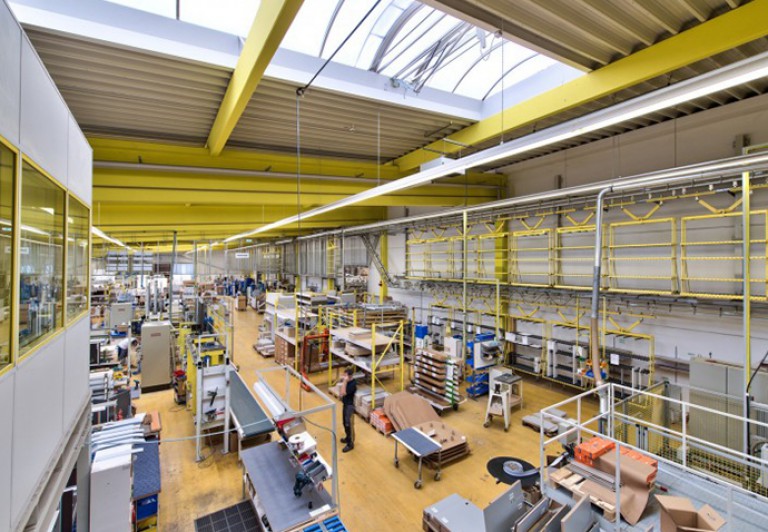 Villeroy & Boch continues its strategy of internationalisation by purchasing Nahm Sanitaryware Co. Ltd. in Bangkok. In so doing, it has created a platform which will enable more efficient use to be made of the high sales potential in the Asiatic region. In order to expand its range of internationally successful bathroom furniture and strategically develop its position in the bathroom-furniture sector, Villeroy & Boch takes over Sanipa, the bathroom-furniture manufacturer in Treuchtlingen, Germany.
Villeroy & Boch continues its strategy of internationalisation by purchasing Nahm Sanitaryware Co. Ltd. in Bangkok. In so doing, it has created a platform which will enable more efficient use to be made of the high sales potential in the Asiatic region. In order to expand its range of internationally successful bathroom furniture and strategically develop its position in the bathroom-furniture sector, Villeroy & Boch takes over Sanipa, the bathroom-furniture manufacturer in Treuchtlingen, Germany. -
2009
Competitiveness is optimised
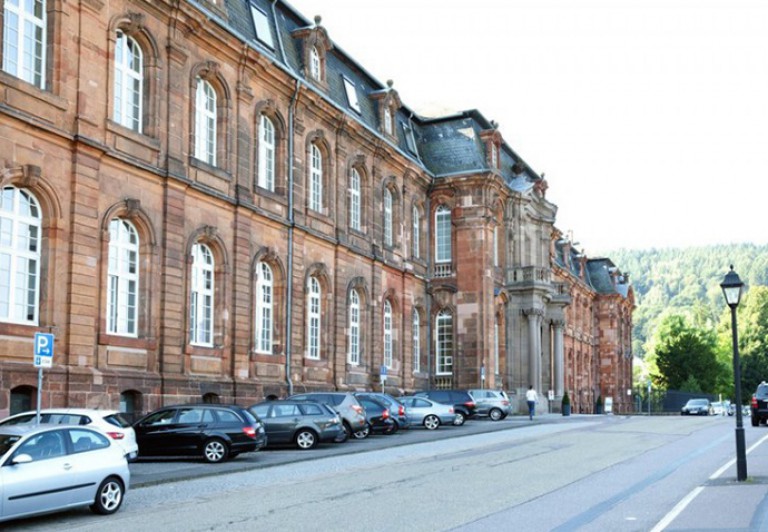 Against the background of a global financial crisis, affecting the sales situation in both divisions, Villeroy & Boch passes a package of measures aimed at increasing competitiveness. It involves the specialisation of locations, creating centres of competence and continuing to progressively automate production processes.
Against the background of a global financial crisis, affecting the sales situation in both divisions, Villeroy & Boch passes a package of measures aimed at increasing competitiveness. It involves the specialisation of locations, creating centres of competence and continuing to progressively automate production processes. -
2010
Cooperation with Rödl & Partner
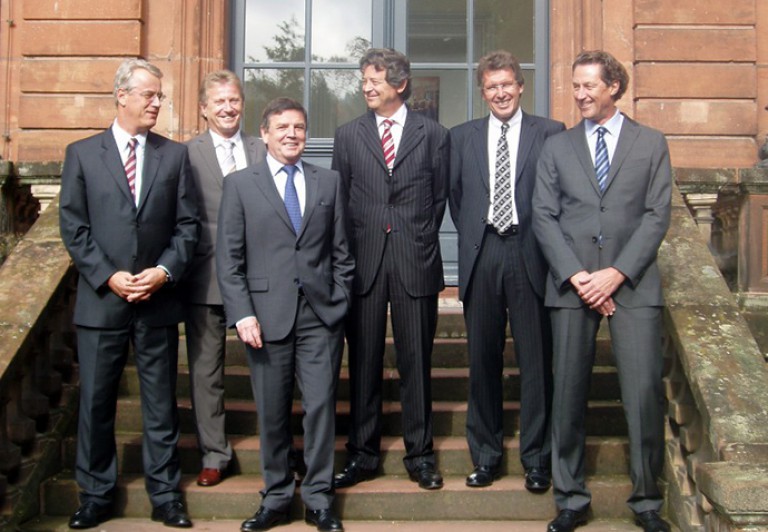 Villeroy & Boch and the international consulting and auditing company Rödl & Partner set up a joint venture which offers small and medium sized companies a consultancy service to optimise their business processes and apply company-wide SAP solutions. At the same time, an agreement is reached to transfer the operation of the worldwide Villeroy & Boch IT infrastructure to Rödl & Partner.
Villeroy & Boch and the international consulting and auditing company Rödl & Partner set up a joint venture which offers small and medium sized companies a consultancy service to optimise their business processes and apply company-wide SAP solutions. At the same time, an agreement is reached to transfer the operation of the worldwide Villeroy & Boch IT infrastructure to Rödl & Partner. -
2013
DirectFlush
 Intelligent engineering: by launching DirectFlush technology, Villeroy & Boch has successfully brought a new generation of toilets to market. The intelligent flushing system provides more hygiene with less cleaning and low water consumption. A DirectFlush toilet only consumes 3 or 4.5 litres of water per flush with maximum flushing efficiency. This innovation has quickly became popular. In 2015, sales of DirectFlush and HygieneFlush toilets doubled in comparison with the previous year.
Intelligent engineering: by launching DirectFlush technology, Villeroy & Boch has successfully brought a new generation of toilets to market. The intelligent flushing system provides more hygiene with less cleaning and low water consumption. A DirectFlush toilet only consumes 3 or 4.5 litres of water per flush with maximum flushing efficiency. This innovation has quickly became popular. In 2015, sales of DirectFlush and HygieneFlush toilets doubled in comparison with the previous year. -
2015
Extension of the Management Board
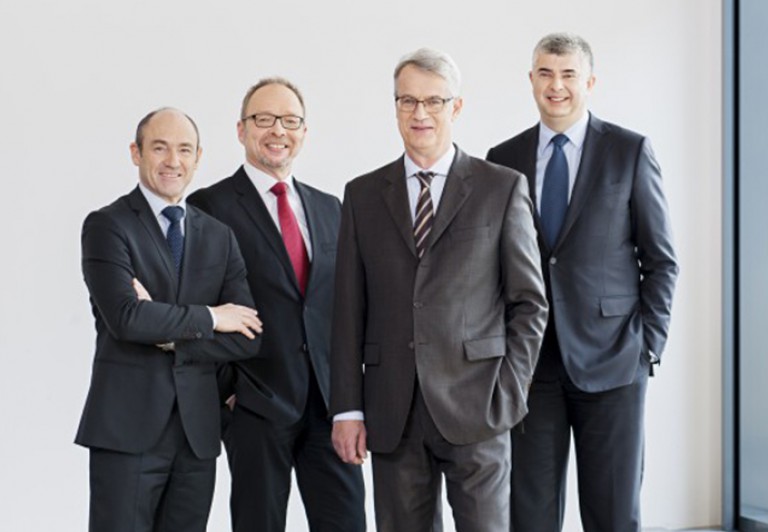 The Supervisory Board of Villeroy & Boch AG has resolved the expansion of the Management Board to four members with effect from 1 May 2012. The Supervisory Board appointed Nicolas Luc Villeroy, Head of the Tableware Division since 2005, to the Management Board member responsible for Tableware Division. Andreas Pfeiffer, Head of the Bathroom and Wellness Division since 2008, has been appointed as the Management Board member responsible for Bathroom and Wellness. Effective 1 January 2015 the Supervisory Board of Villeroy & Boch AG has appointed Dr. Markus Warncke to the Management Board of Villeroy & Boch AG as Chief Financial Officer.
The Supervisory Board of Villeroy & Boch AG has resolved the expansion of the Management Board to four members with effect from 1 May 2012. The Supervisory Board appointed Nicolas Luc Villeroy, Head of the Tableware Division since 2005, to the Management Board member responsible for Tableware Division. Andreas Pfeiffer, Head of the Bathroom and Wellness Division since 2008, has been appointed as the Management Board member responsible for Bathroom and Wellness. Effective 1 January 2015 the Supervisory Board of Villeroy & Boch AG has appointed Dr. Markus Warncke to the Management Board of Villeroy & Boch AG as Chief Financial Officer. -
2015
TitanCeram
 A milestone in ceramic research: drawing on 270 years of ceramic experience, a new material – TitanCeram – was developed, which is used specifically for very delicate, high-quality designs. The special composition of natural raw materials such as quartz, feldspar and clay with titanium dioxide enables elegant designs with high stability. TitanCeram allows the production of precise washbasins with extremely thin walls and clearly defined edges, which are also very robust.
A milestone in ceramic research: drawing on 270 years of ceramic experience, a new material – TitanCeram – was developed, which is used specifically for very delicate, high-quality designs. The special composition of natural raw materials such as quartz, feldspar and clay with titanium dioxide enables elegant designs with high stability. TitanCeram allows the production of precise washbasins with extremely thin walls and clearly defined edges, which are also very robust. -
2018
Villeroy&Boch celebrates its 270th anniversary
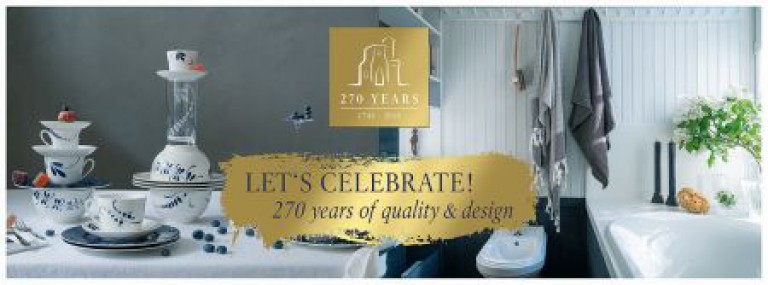 Since its foundation in 1748, Villeroy & Boch has developed into one of the world’s leading ceramic producers and a lifestyle brand. One open secret of Villeroy & Boch's success is the art of repeatedly combining traditional and modern elements in harmonious and successful fusions. To mark its 270th anniversary, the company’s oldest décor was given a modern twist. The delicate blue floral tendrils of “Old Luxembourg”, the brindille pattern, have been adapted and given a contemporary feel under the name of “Old Luxembourg Brindille”.
Since its foundation in 1748, Villeroy & Boch has developed into one of the world’s leading ceramic producers and a lifestyle brand. One open secret of Villeroy & Boch's success is the art of repeatedly combining traditional and modern elements in harmonious and successful fusions. To mark its 270th anniversary, the company’s oldest décor was given a modern twist. The delicate blue floral tendrils of “Old Luxembourg”, the brindille pattern, have been adapted and given a contemporary feel under the name of “Old Luxembourg Brindille”. -
2018
Factory N°09 completed
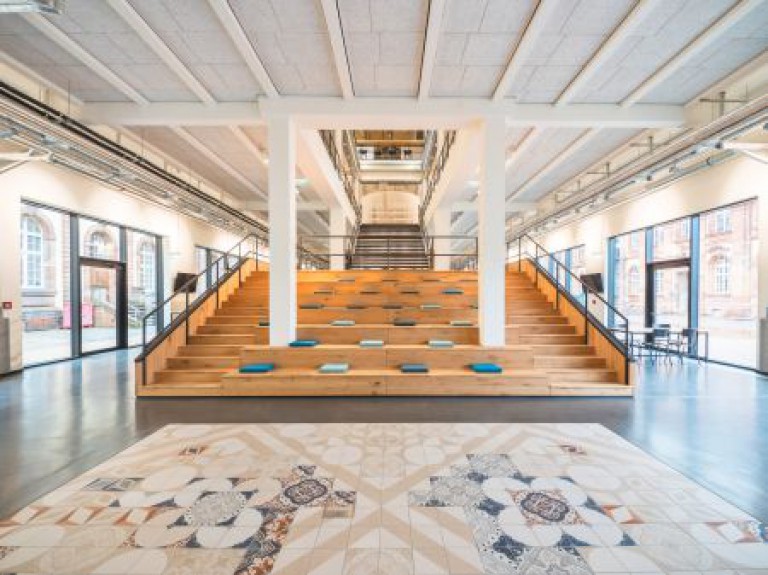 Villeroy & Boch employees from the Communication departments have been working in a new office and conference centre in Mettlach since February 2018. Factory N°09 marks the completion of an important part of the “Mettlach 2.0” site development project. Today, the only reminder of the incarnation of these former warehouse and production premises is the name Factory N°09. With its diverse spectrum of working spaces, the new building has broken away from conventional office structures: about 4,000 square metres provide a tailored work space for each activity.
Villeroy & Boch employees from the Communication departments have been working in a new office and conference centre in Mettlach since February 2018. Factory N°09 marks the completion of an important part of the “Mettlach 2.0” site development project. Today, the only reminder of the incarnation of these former warehouse and production premises is the name Factory N°09. With its diverse spectrum of working spaces, the new building has broken away from conventional office structures: about 4,000 square metres provide a tailored work space for each activity. -
2018
Visit by the German Federal President
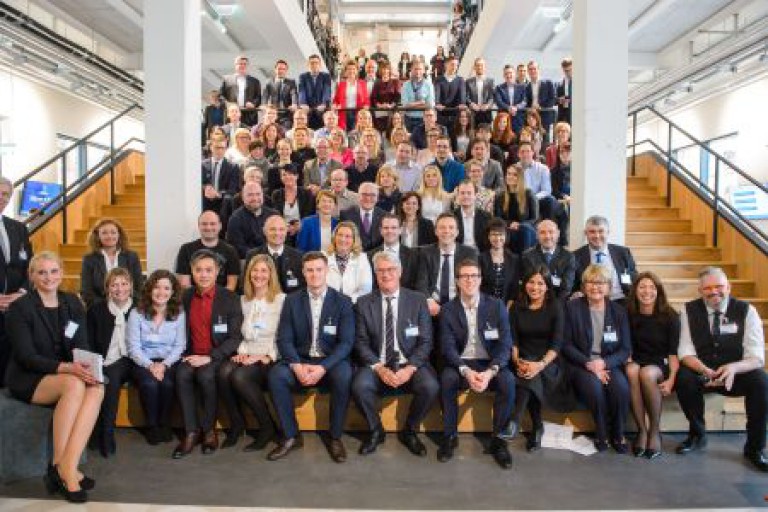 In March 2018, Villeroy & Boch welcomed a distinguished visitor to the company’s headquarters. As part of his inaugural visit to Saarland, the Federal President Frank-Walter Steinmeier, accompanied by his wife Elke Büdenbender, came to our company and found out about the history of the ceramic manufacturer on a guided tour through Keravision. Also current topics regarding the new working environment were important to the president. Villeroy & Boch employees had the opportunity to talk to the Federal President during a concluding discussion session in Factory N°09’s market square.
In March 2018, Villeroy & Boch welcomed a distinguished visitor to the company’s headquarters. As part of his inaugural visit to Saarland, the Federal President Frank-Walter Steinmeier, accompanied by his wife Elke Büdenbender, came to our company and found out about the history of the ceramic manufacturer on a guided tour through Keravision. Also current topics regarding the new working environment were important to the president. Villeroy & Boch employees had the opportunity to talk to the Federal President during a concluding discussion session in Factory N°09’s market square.